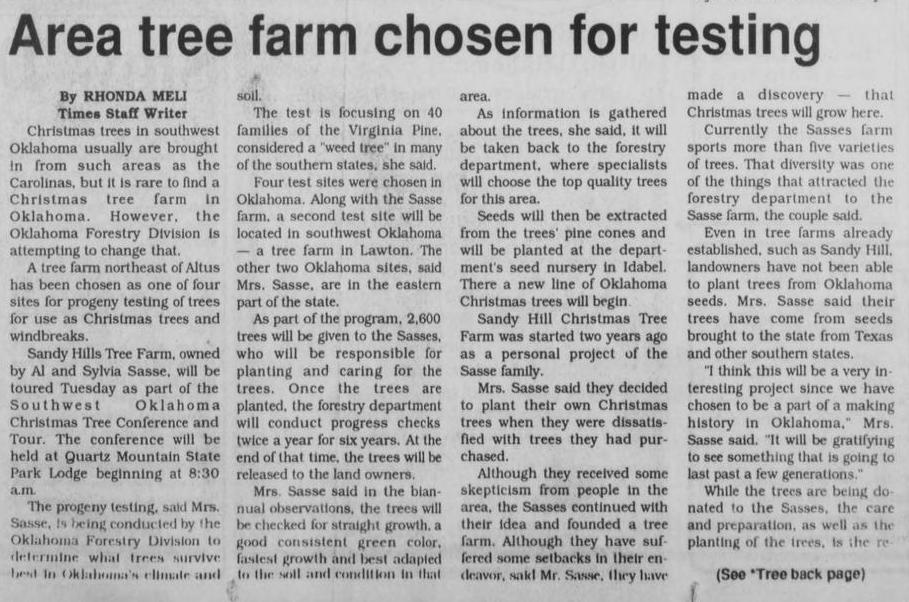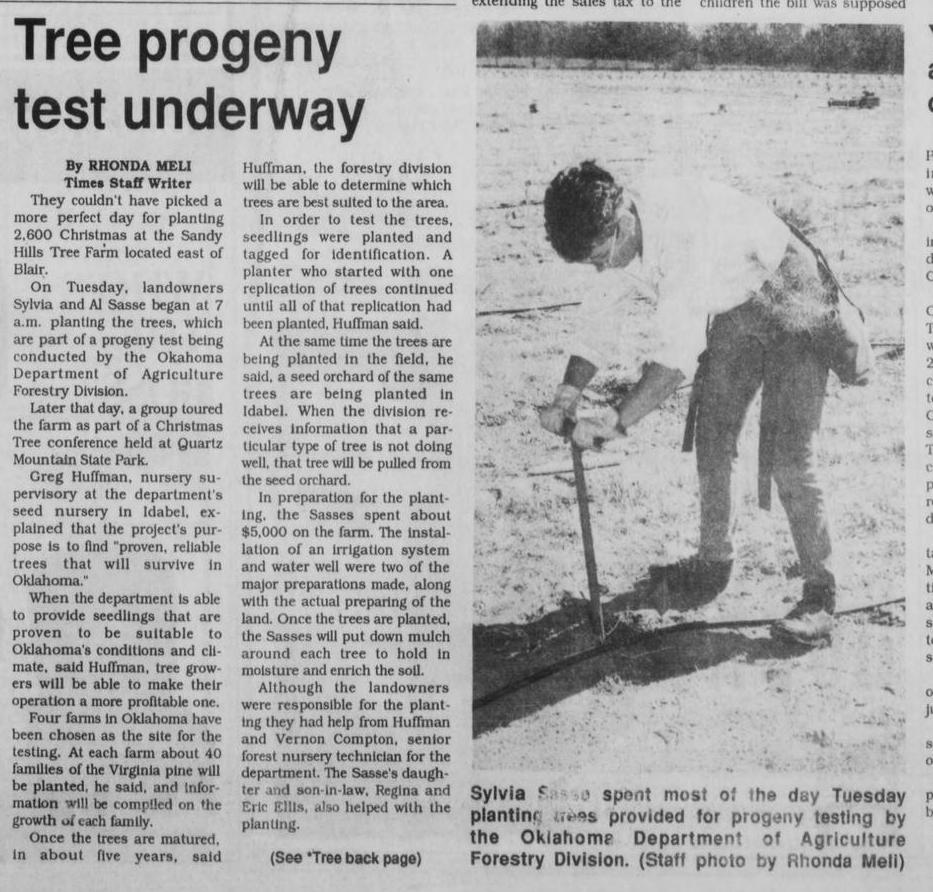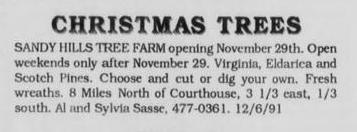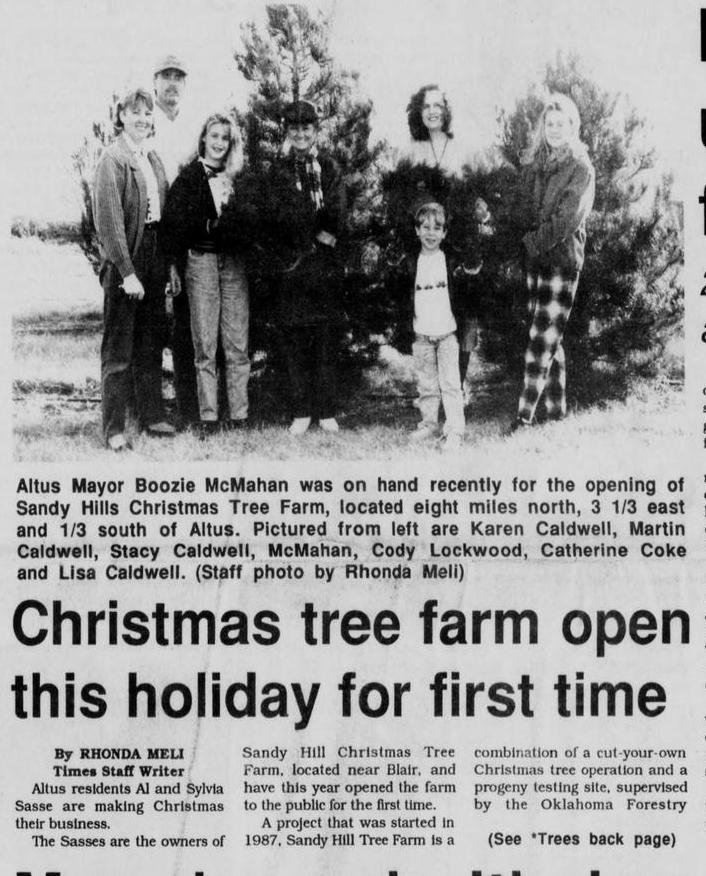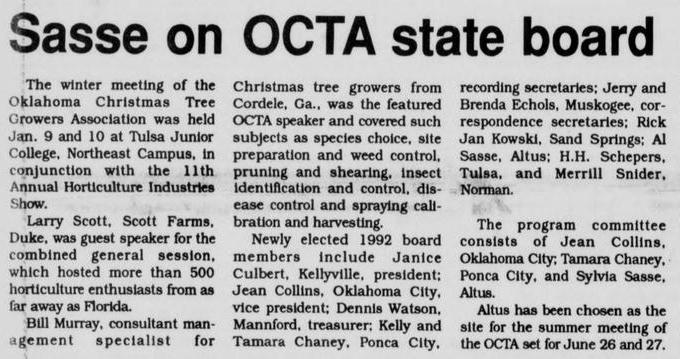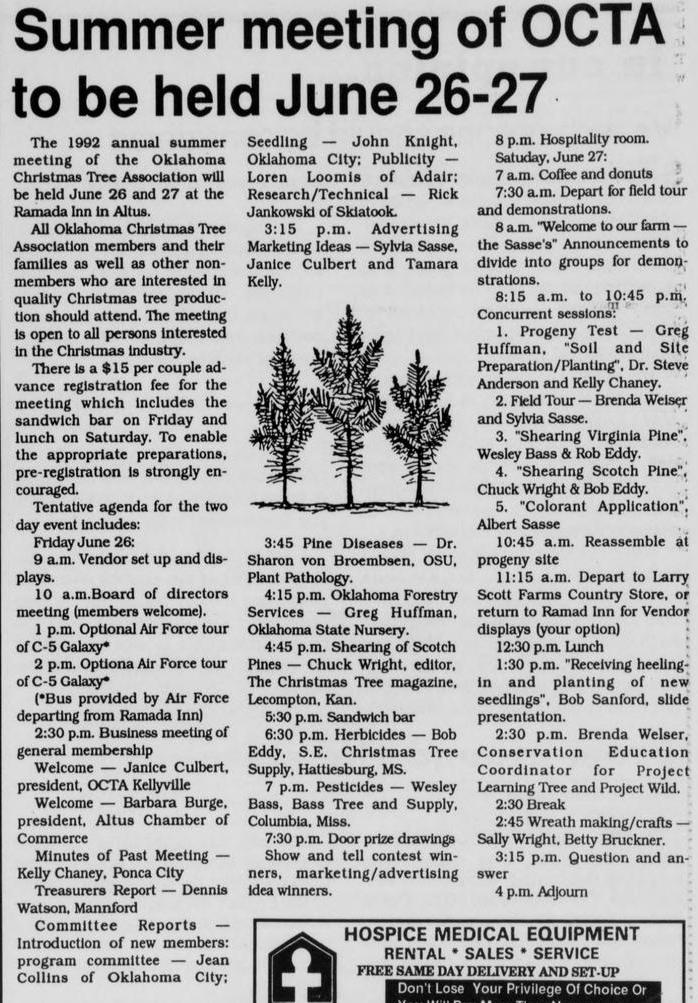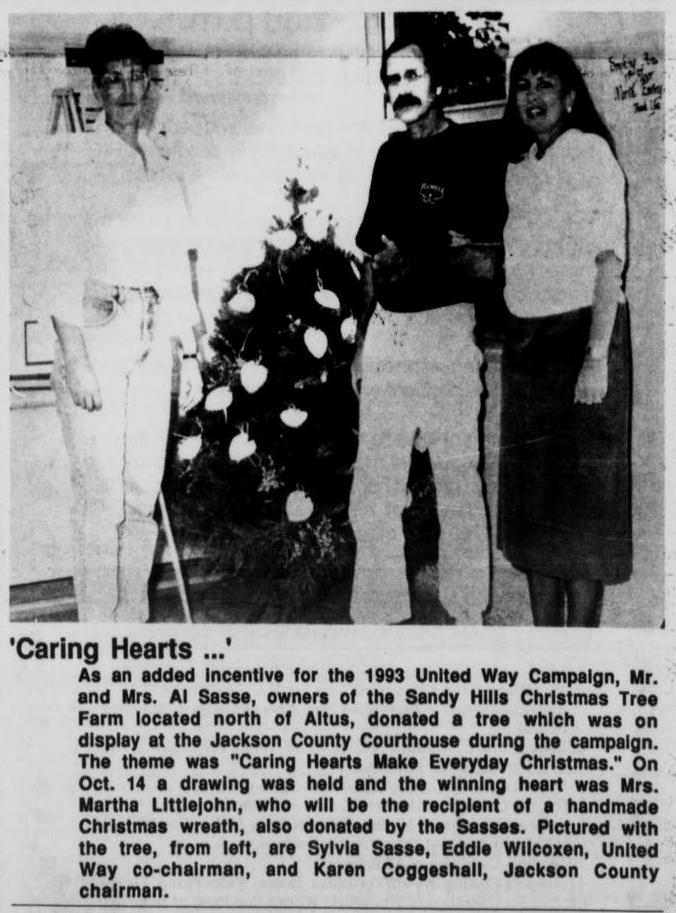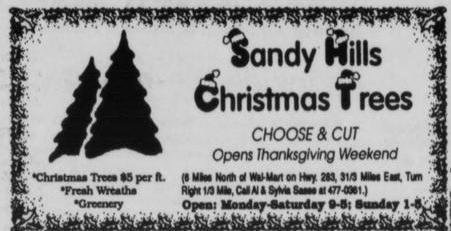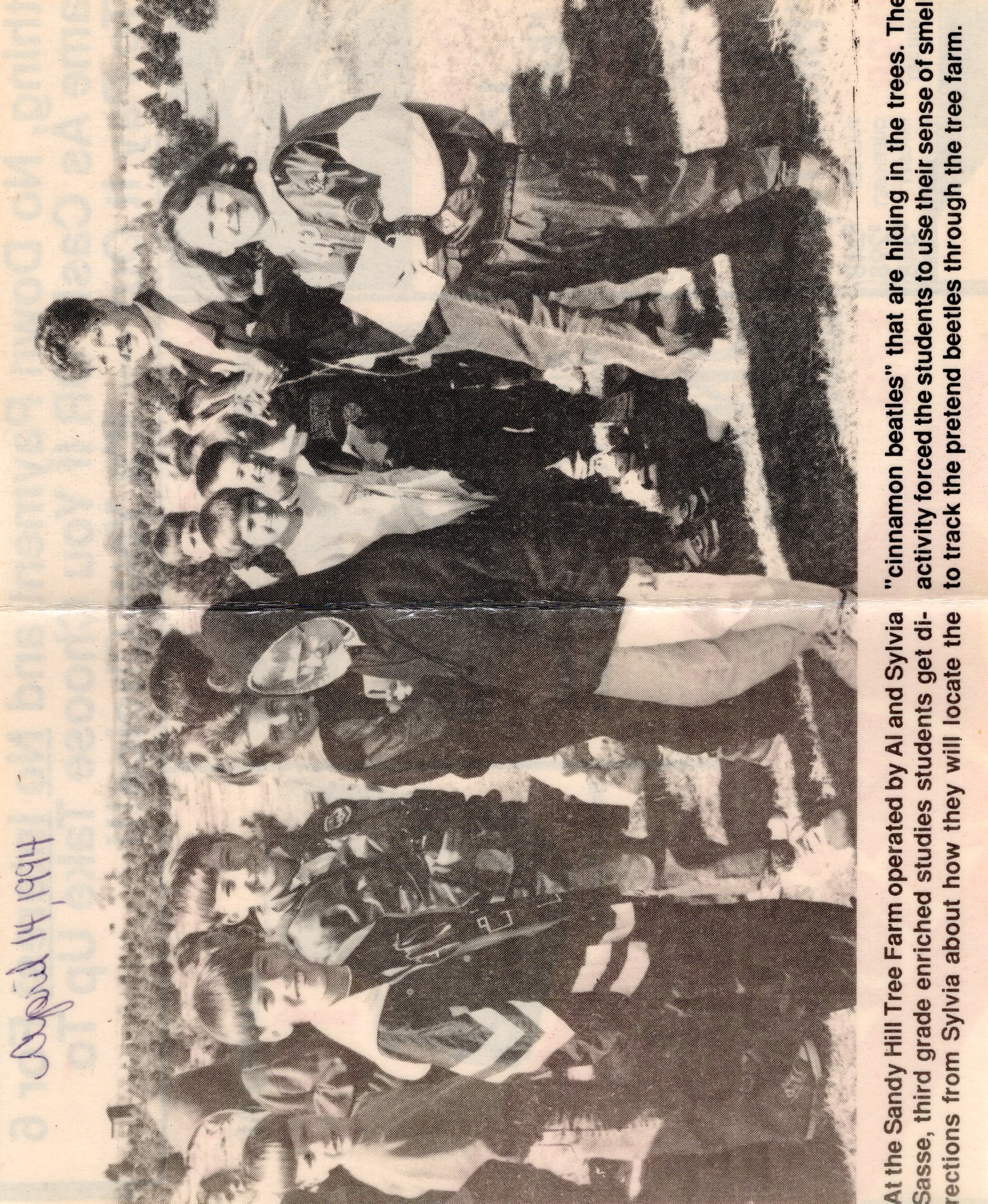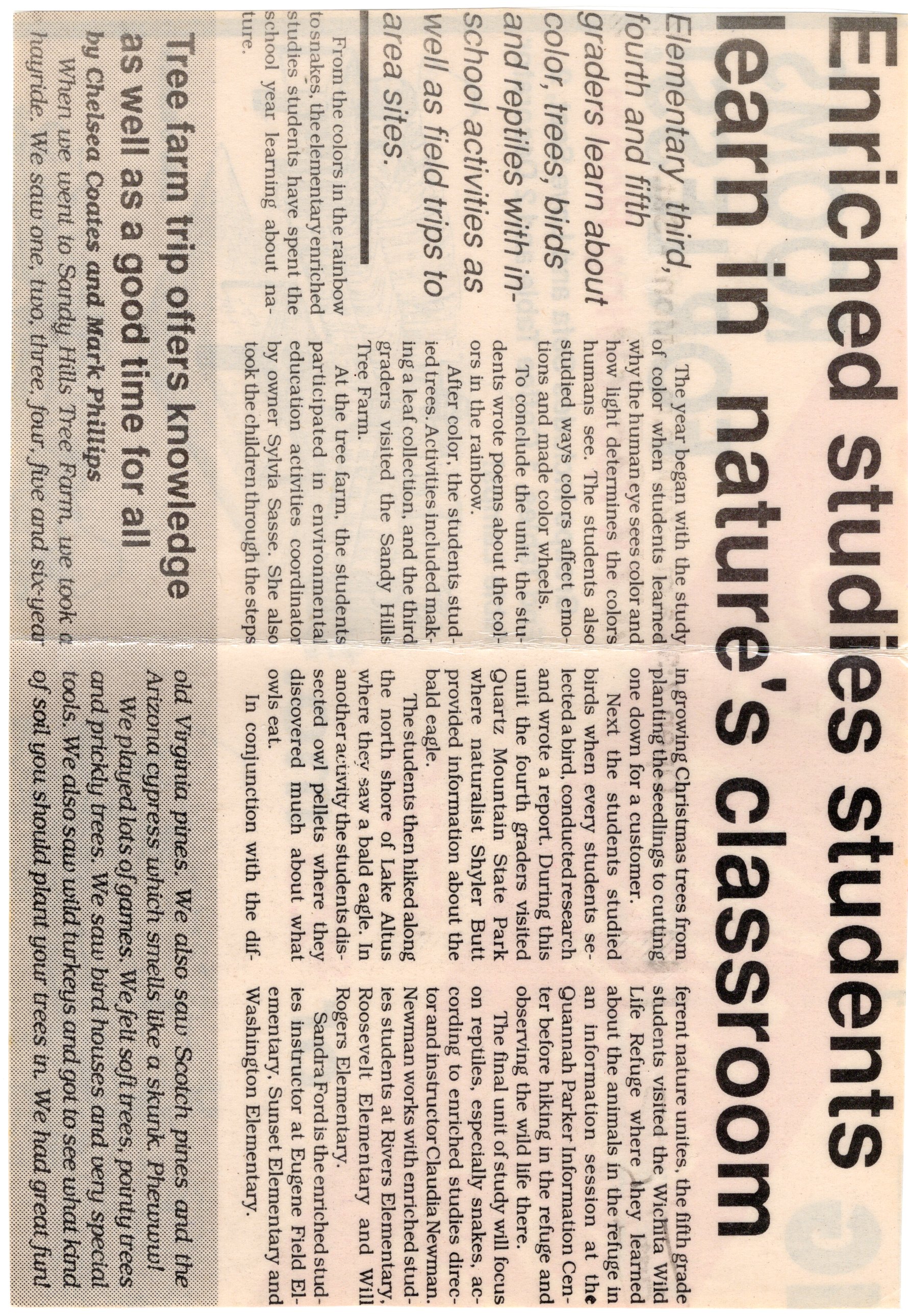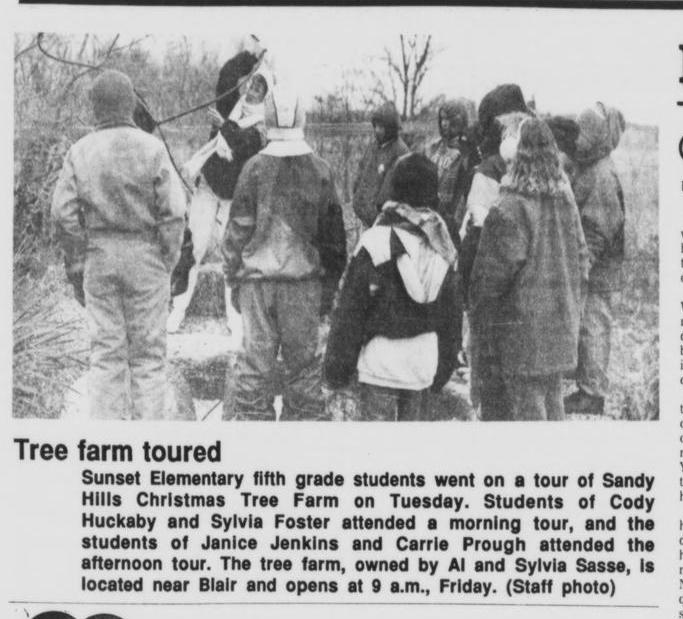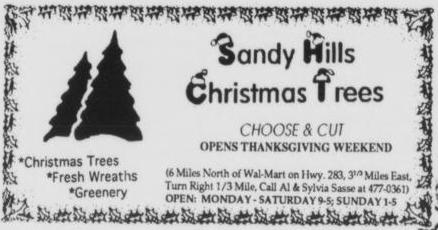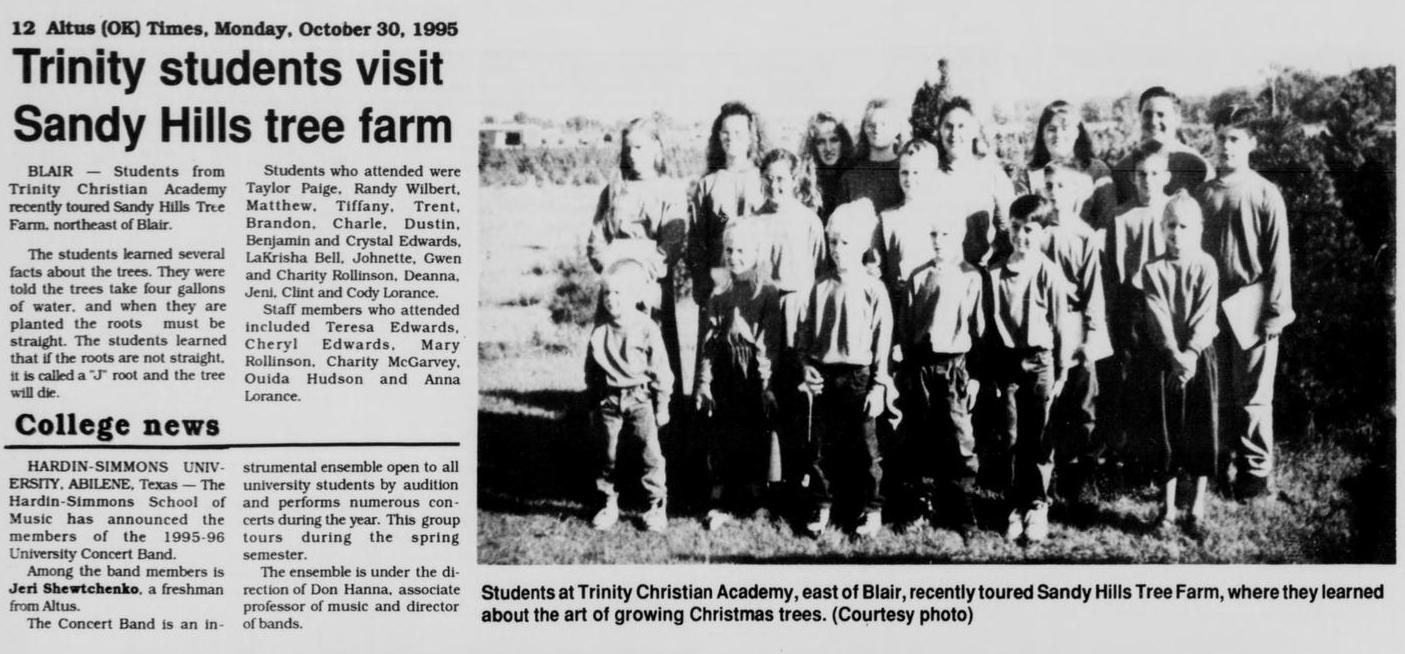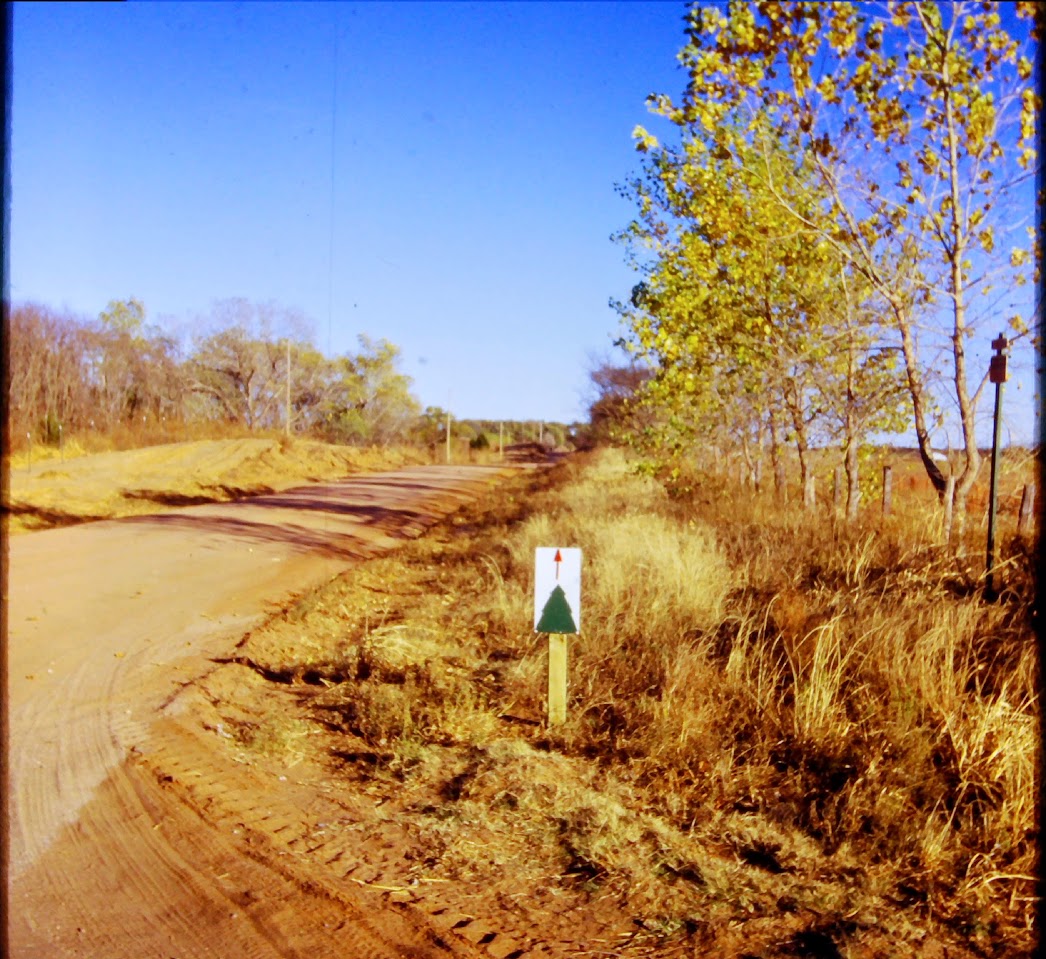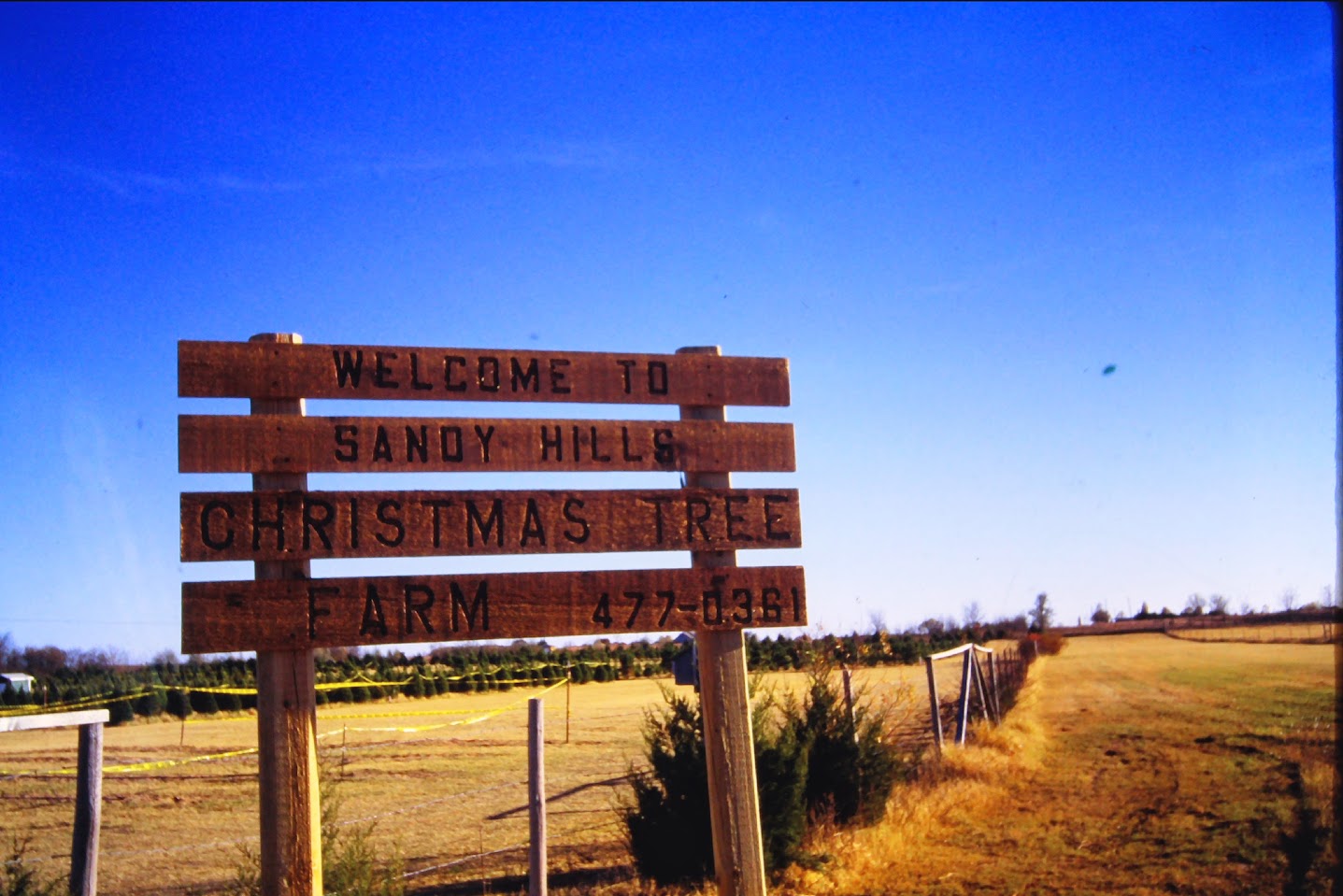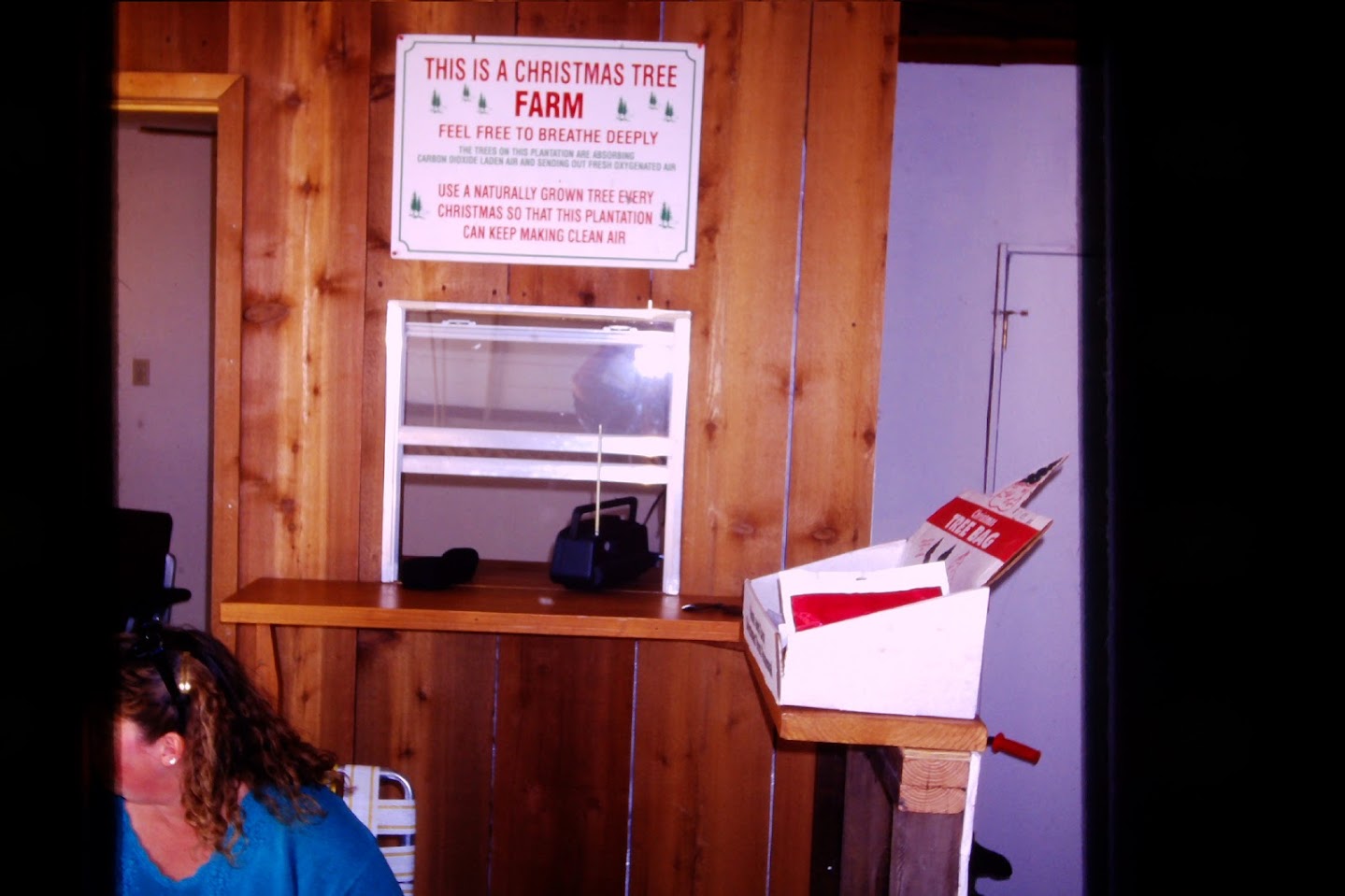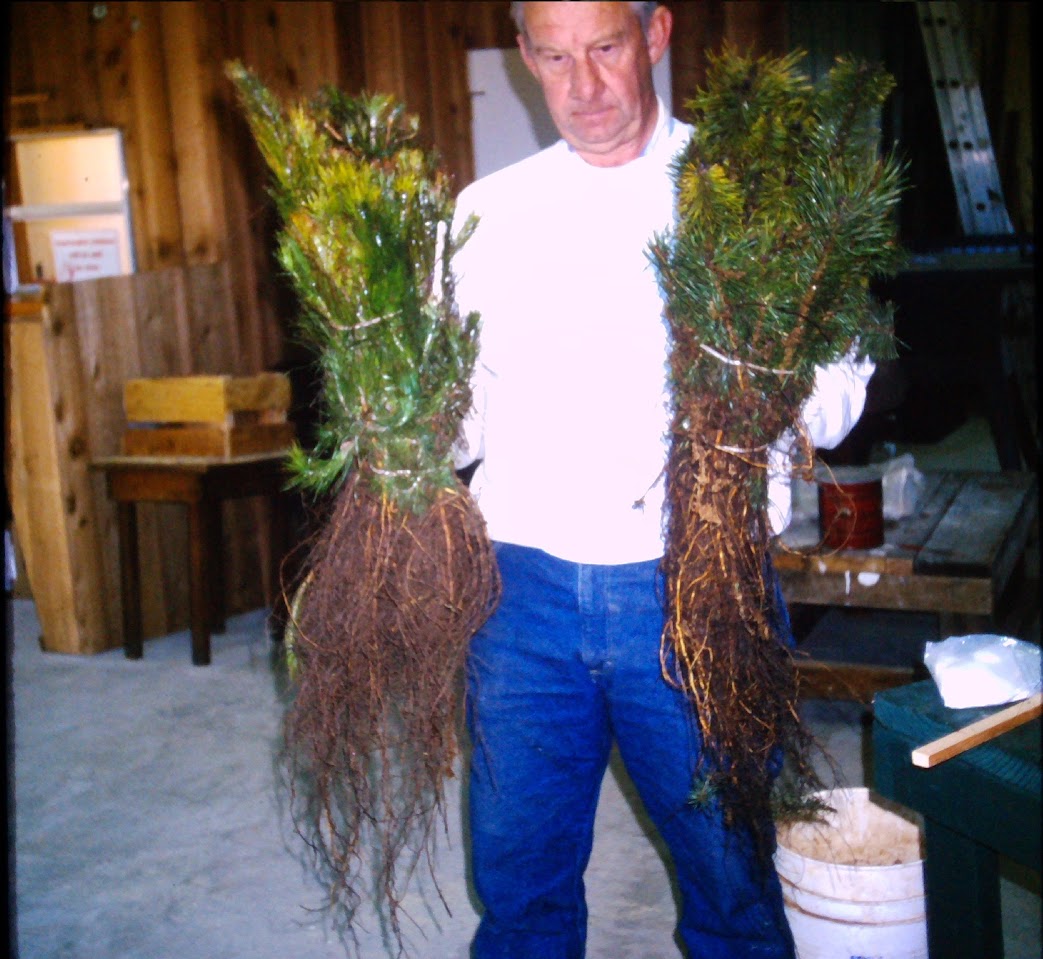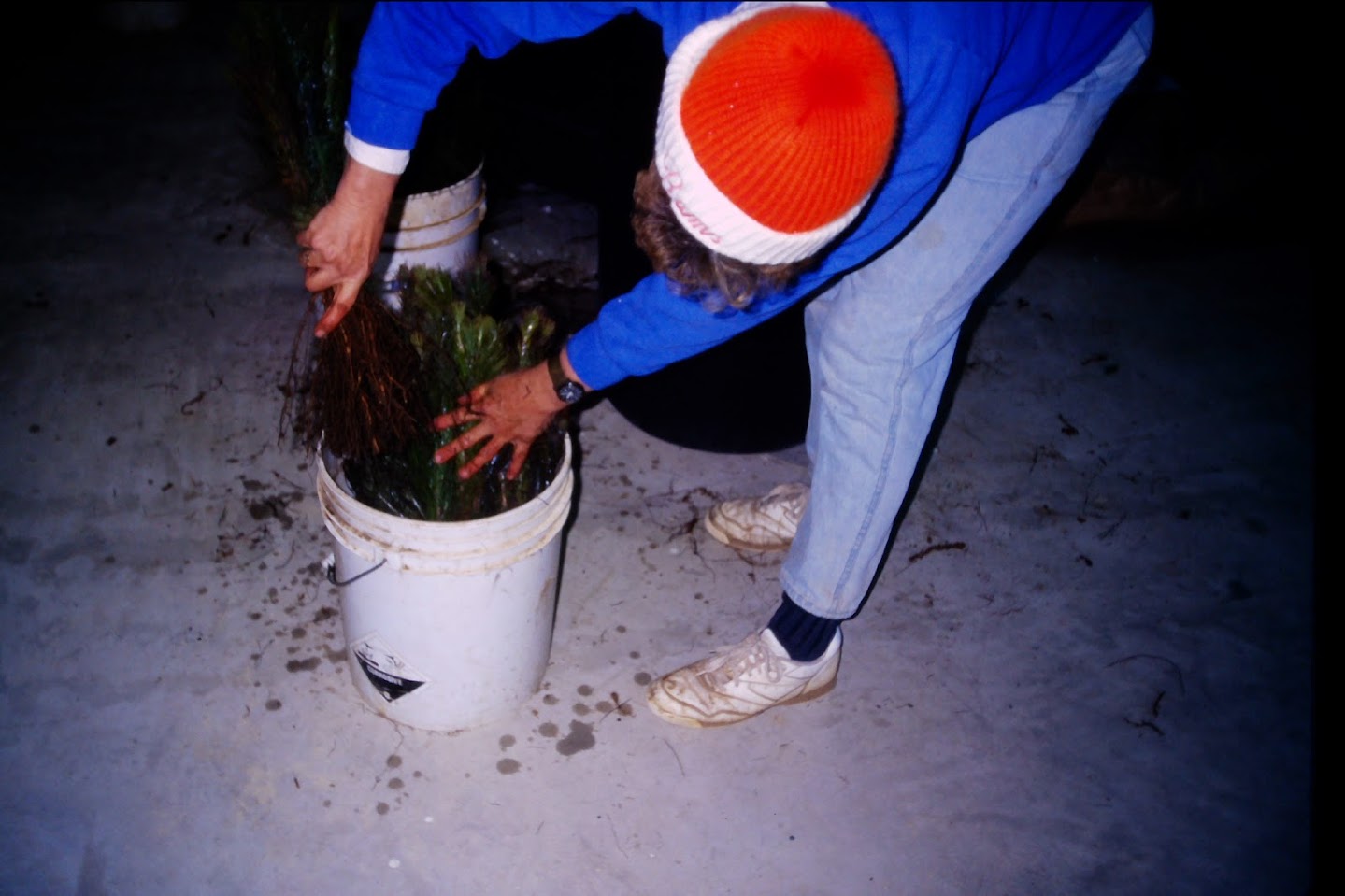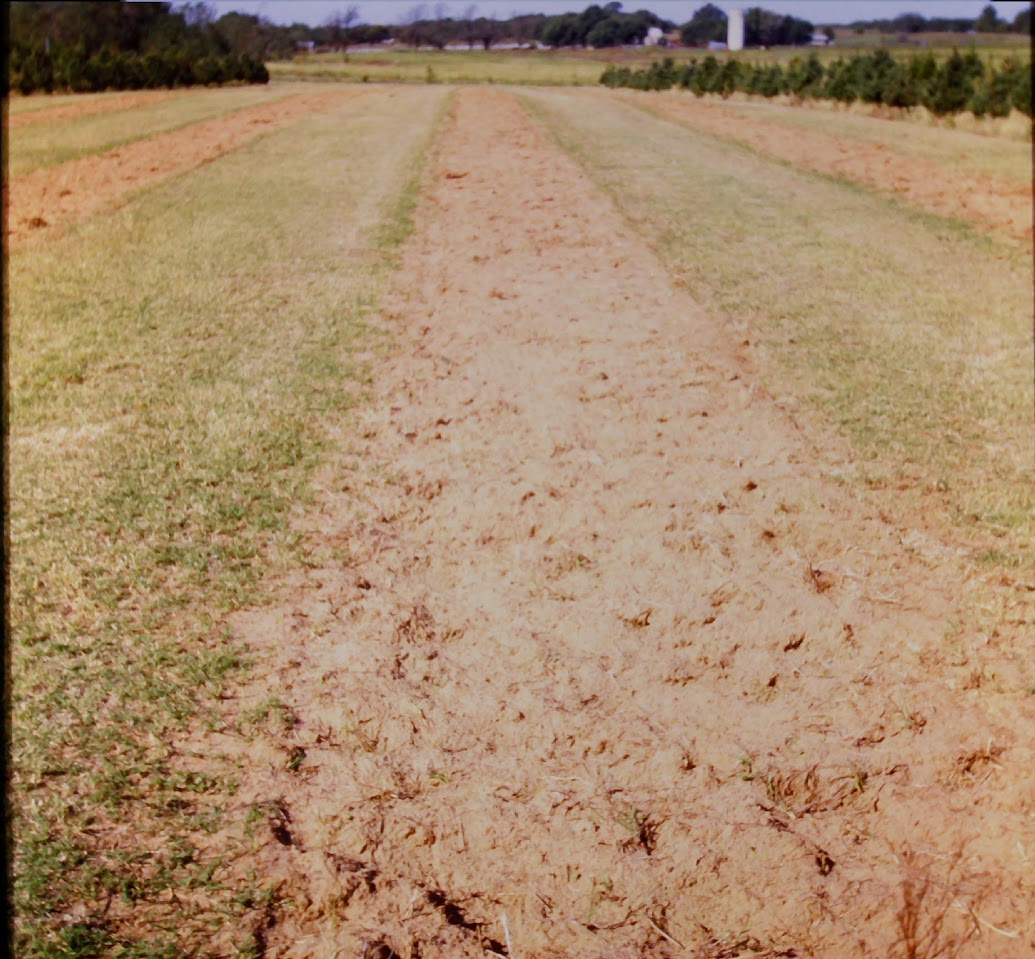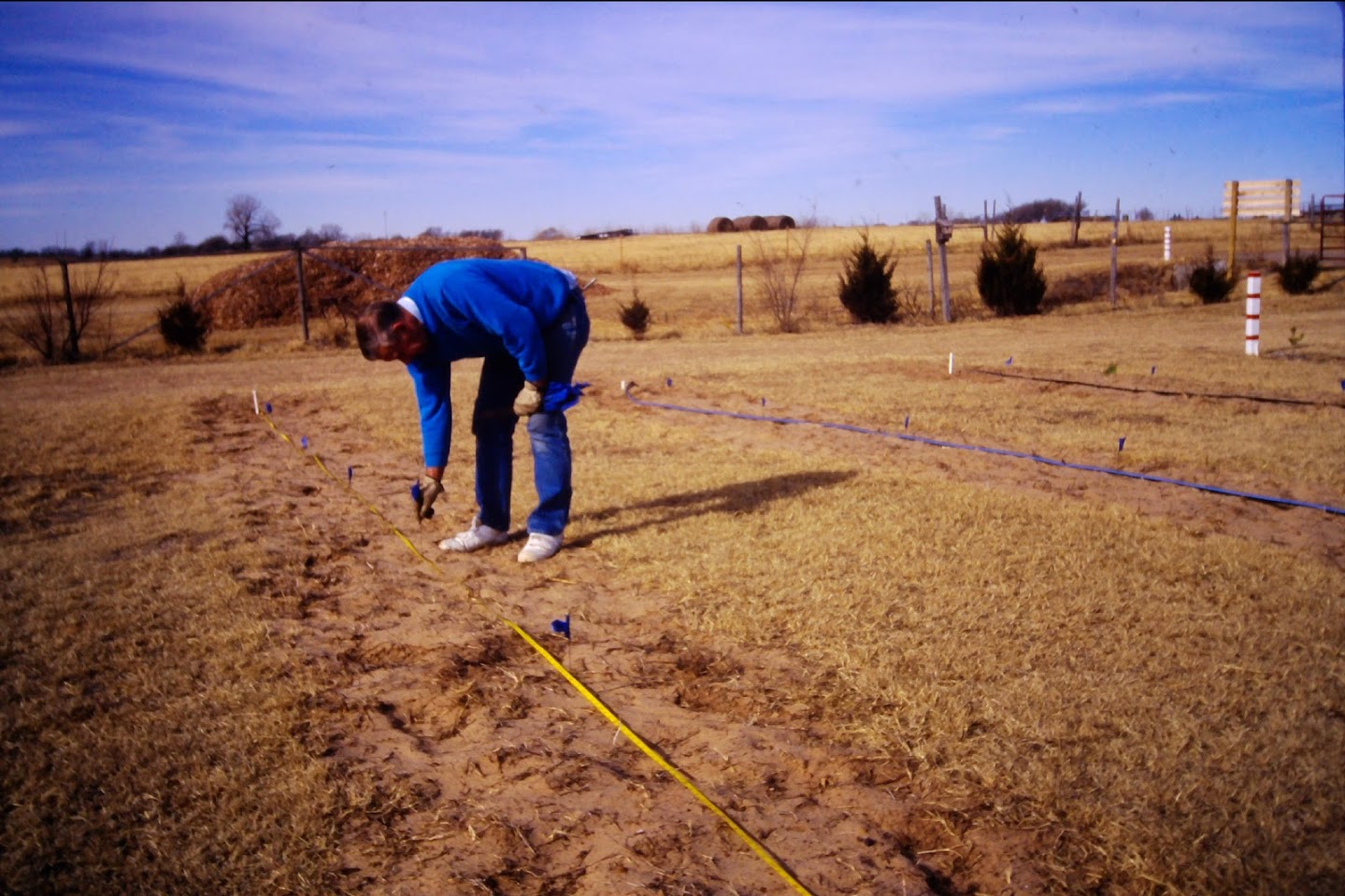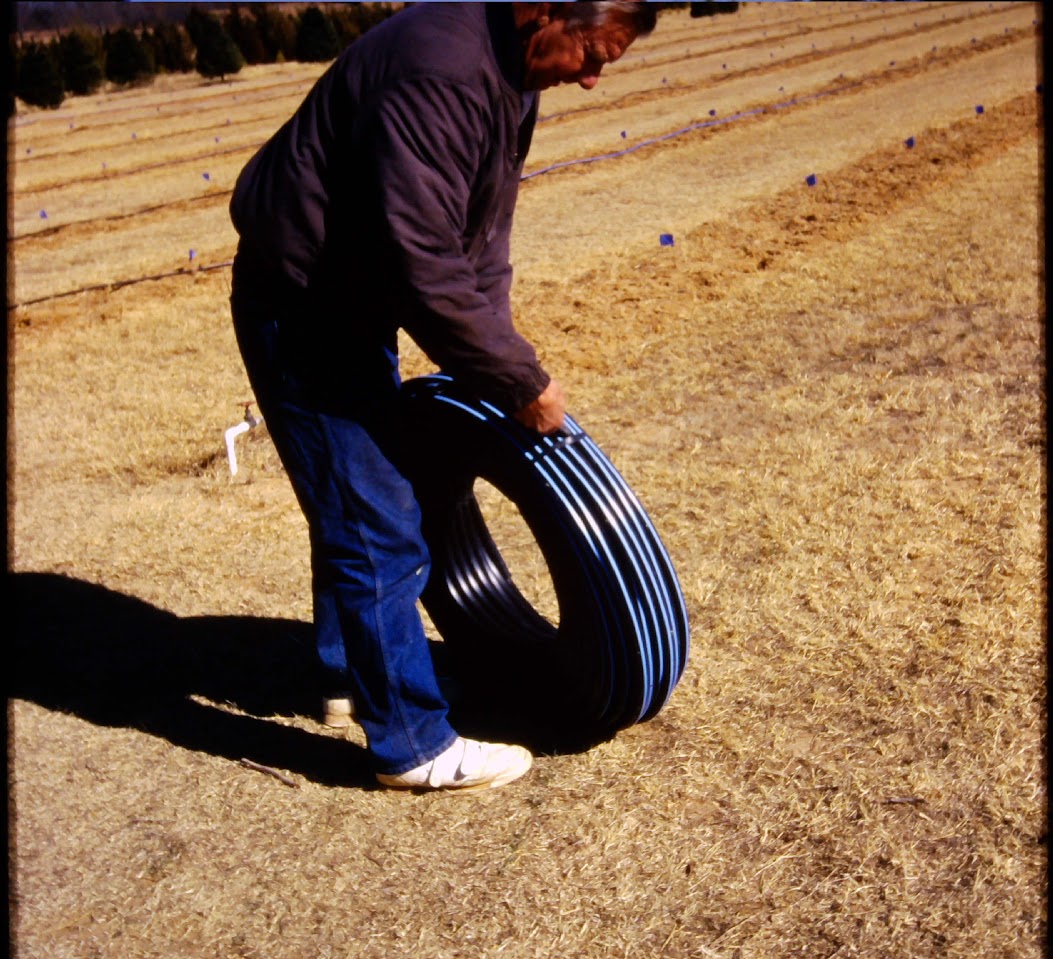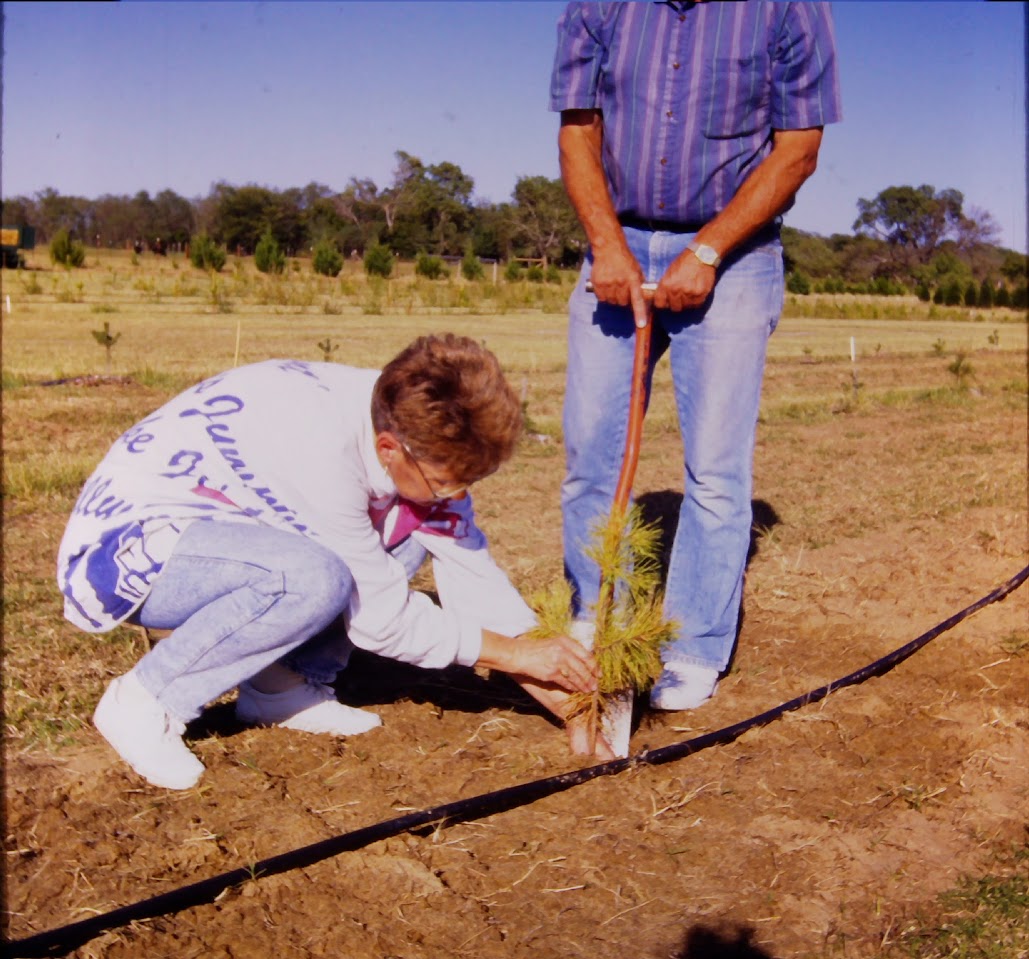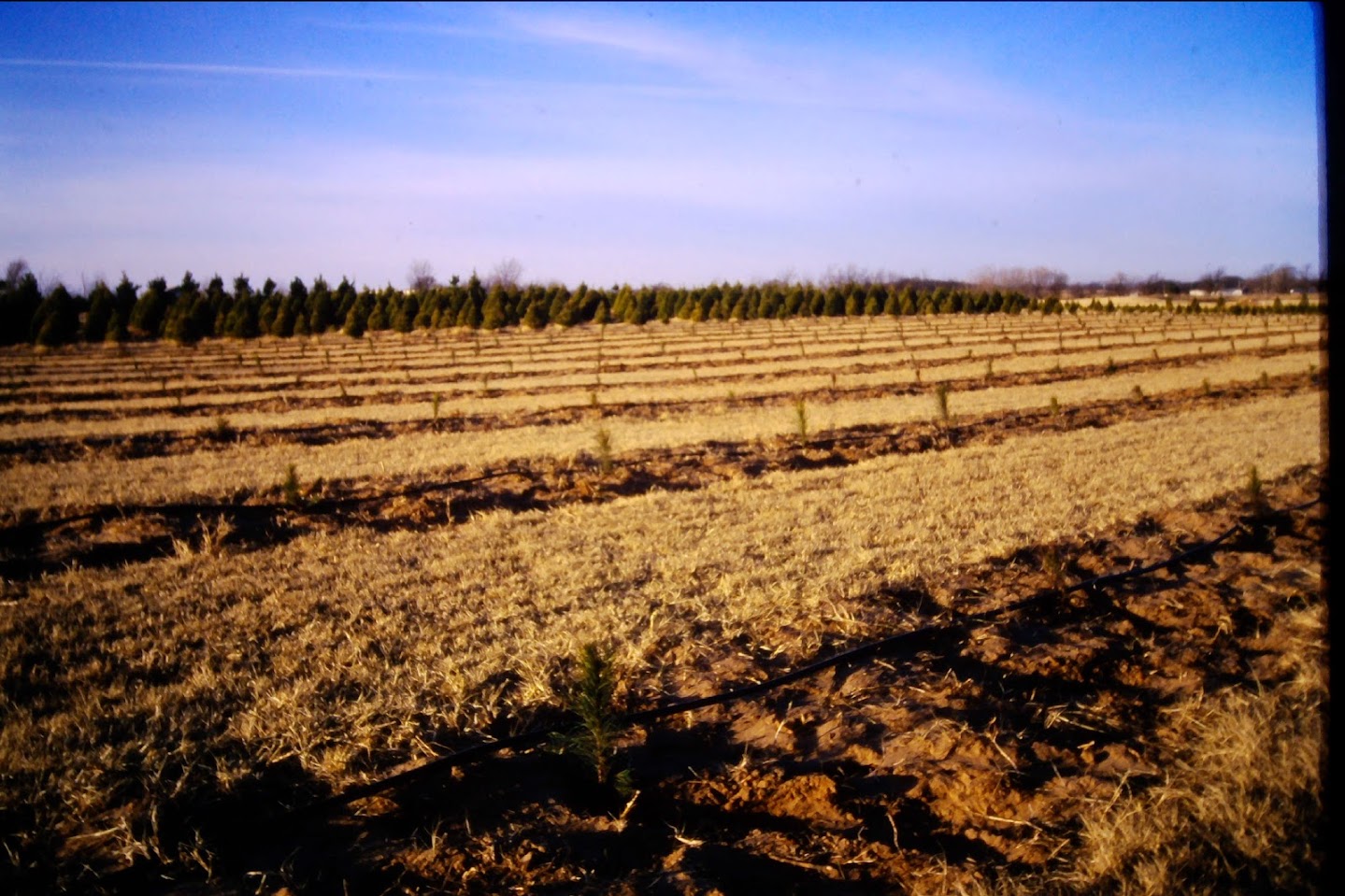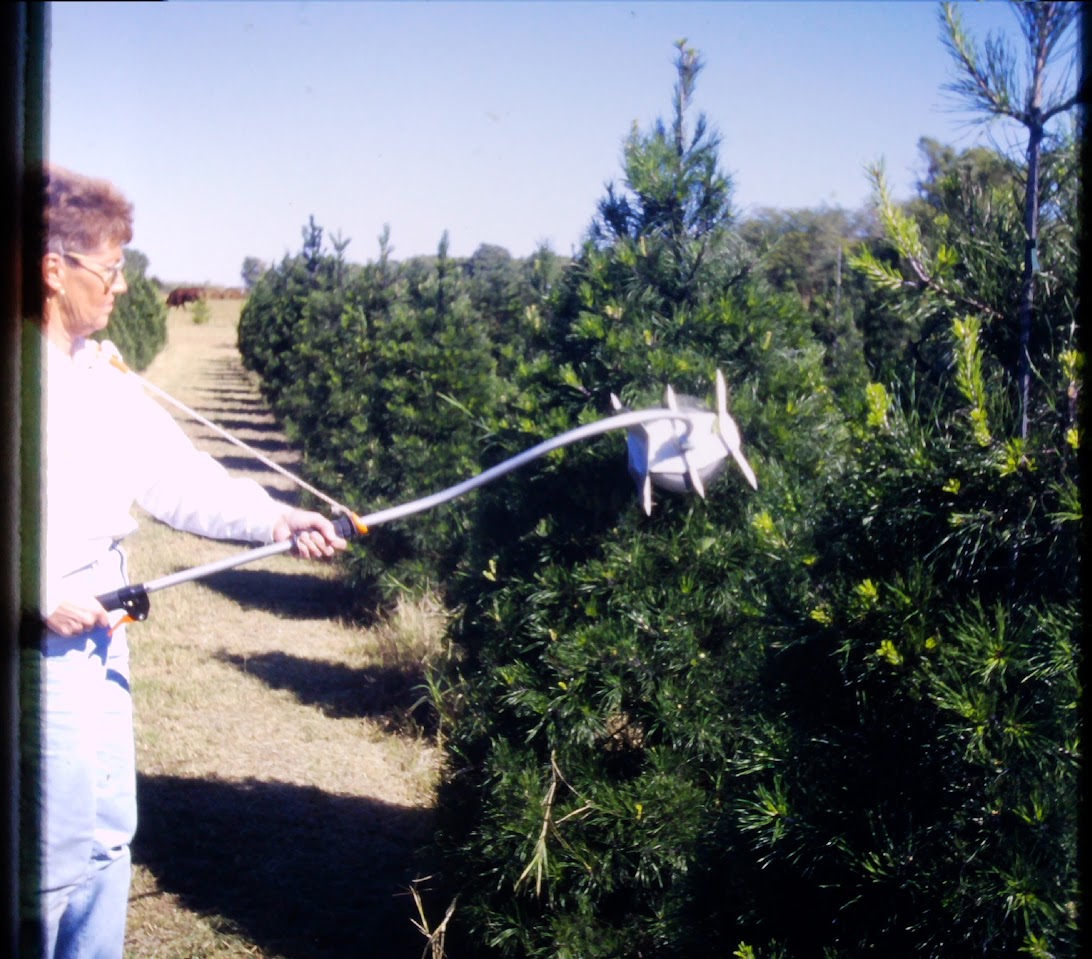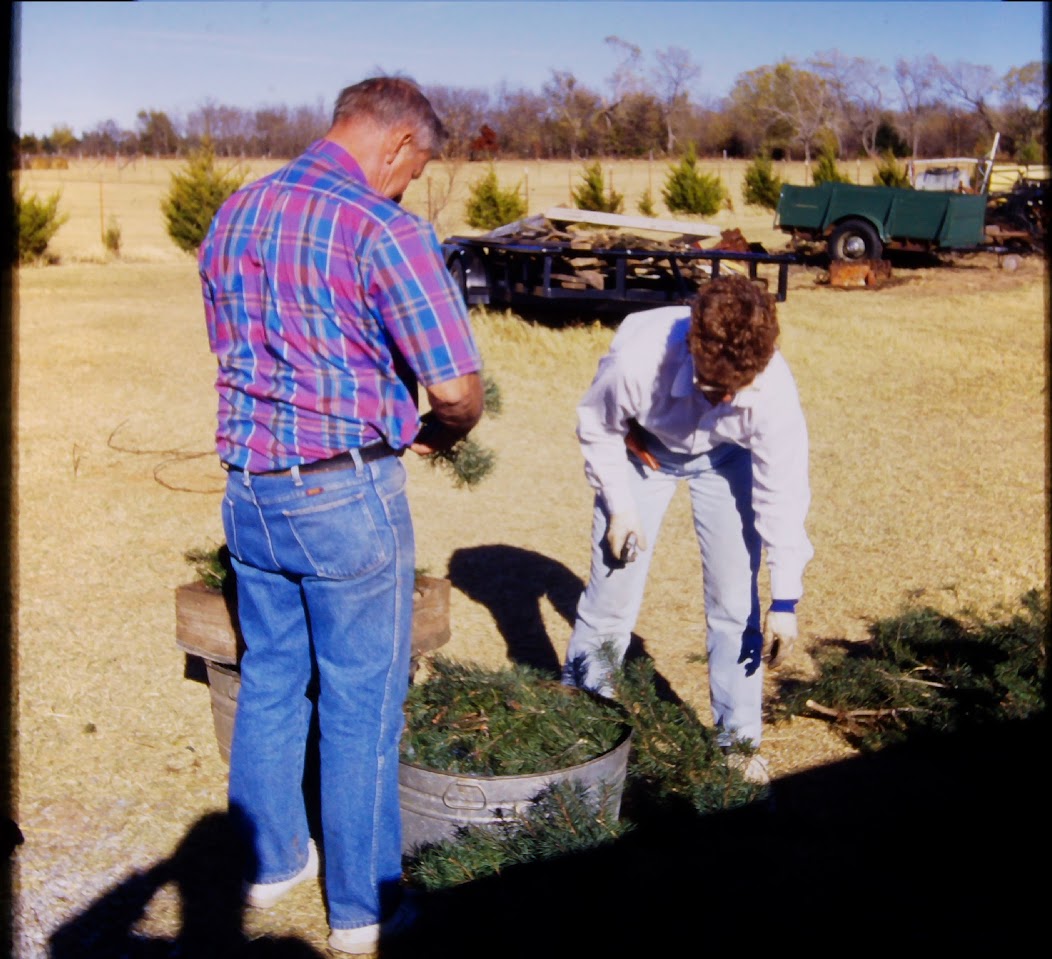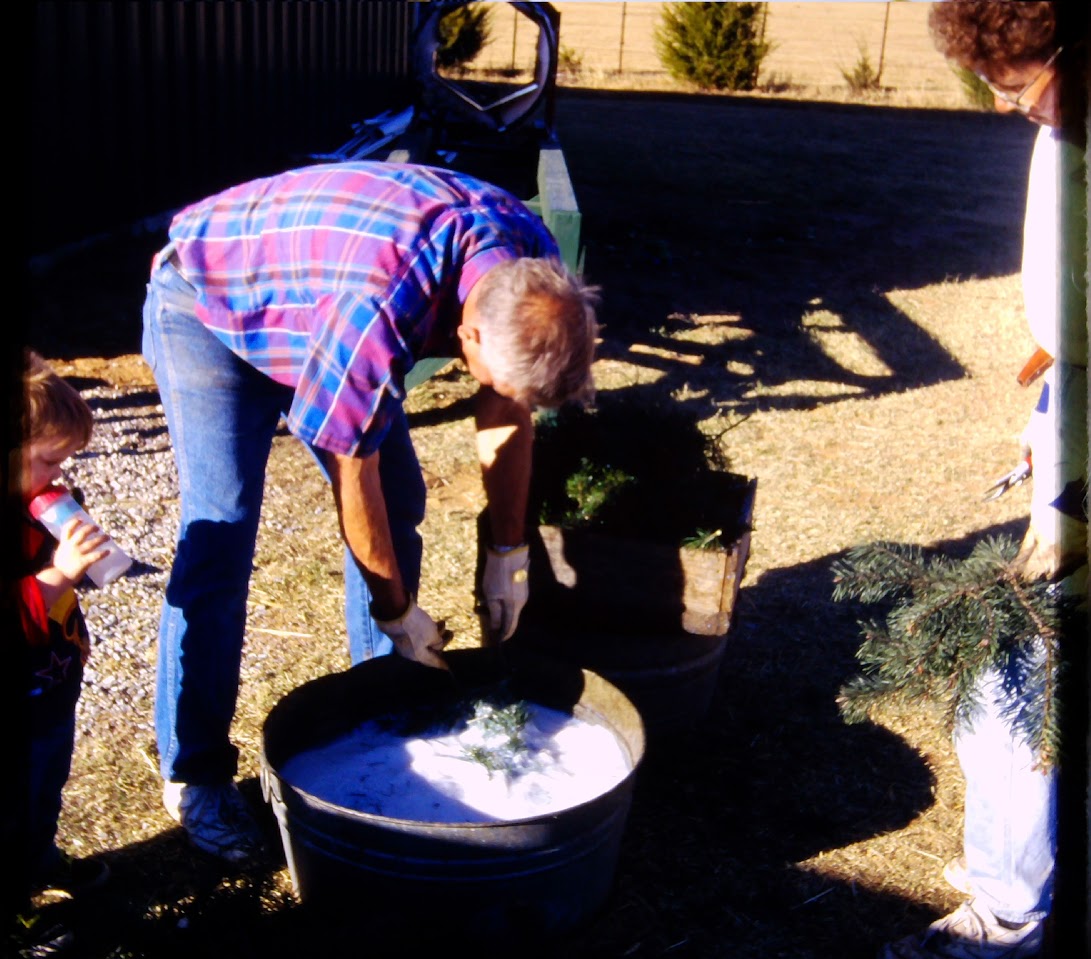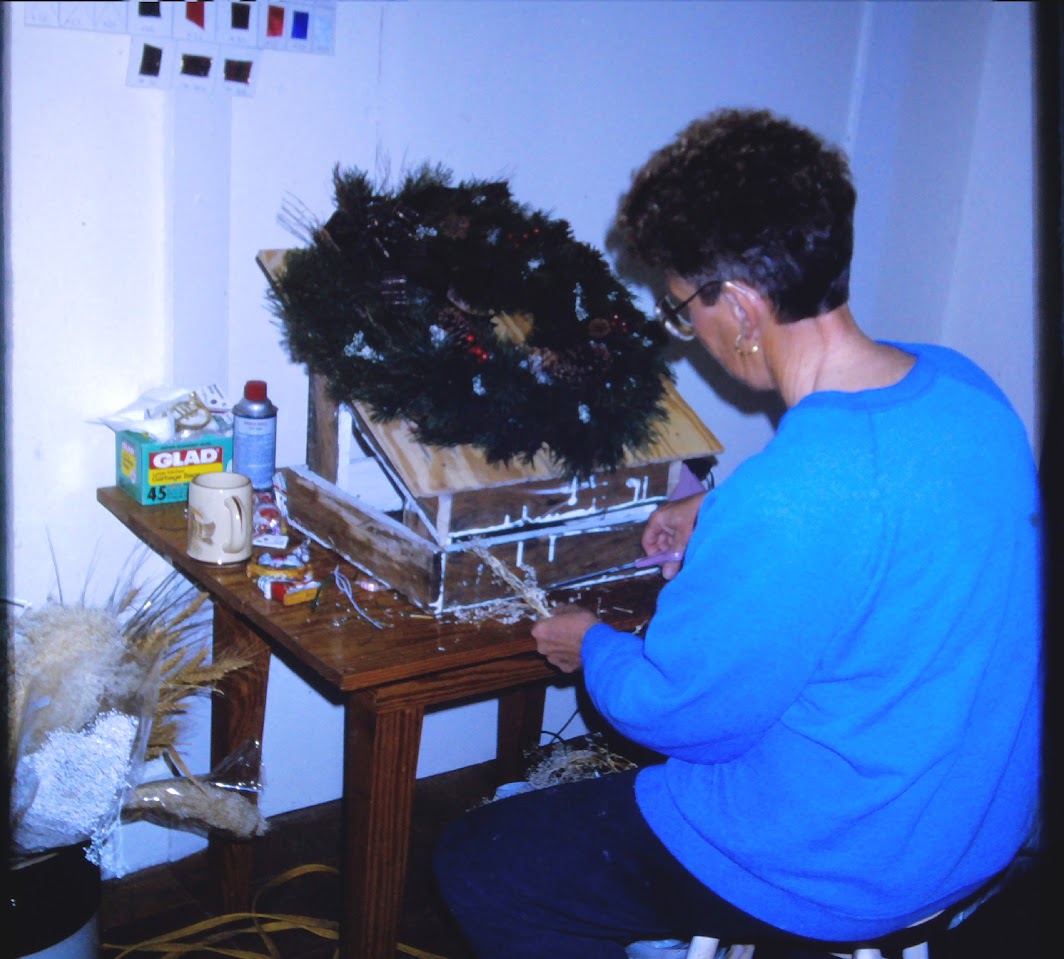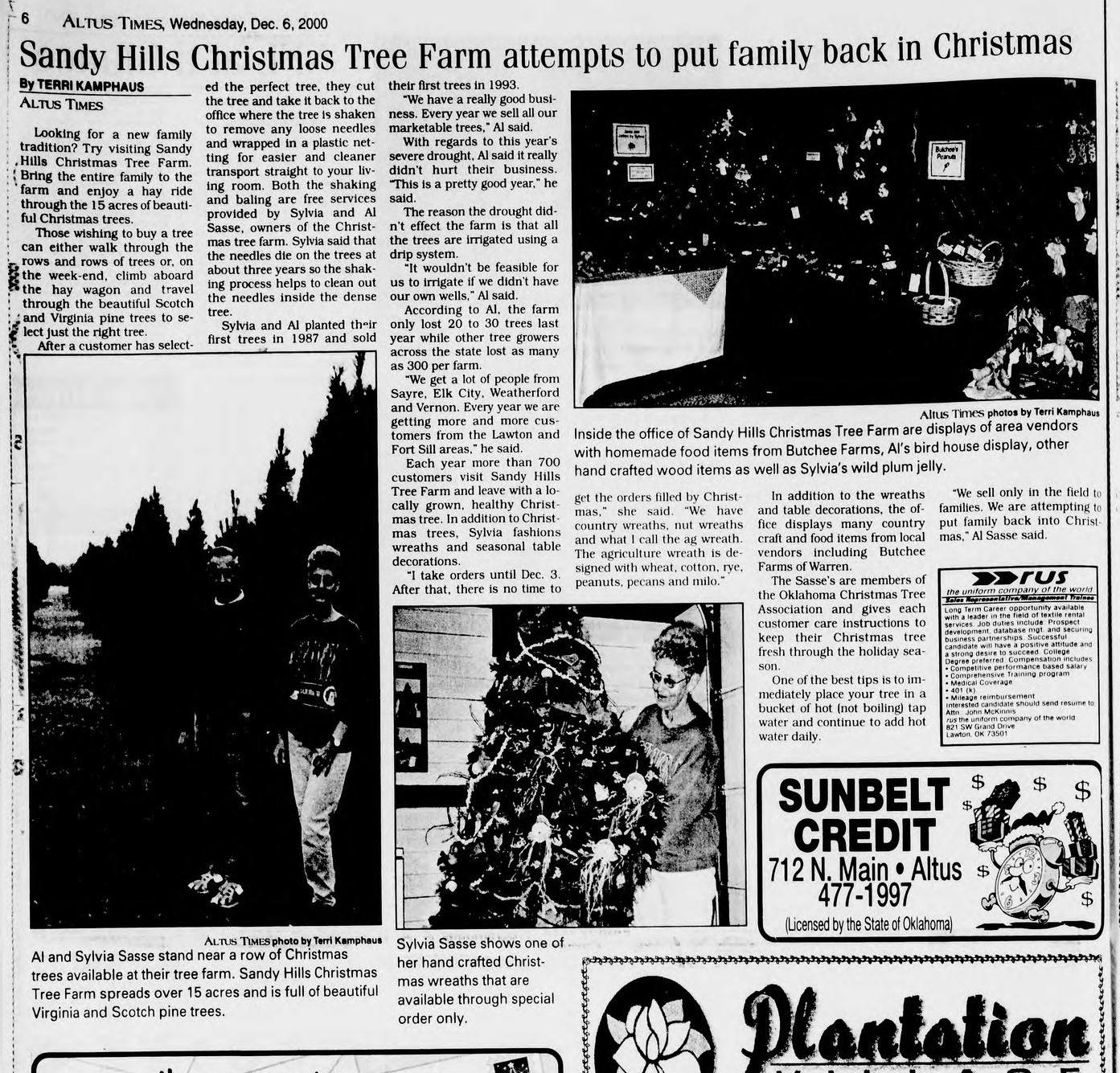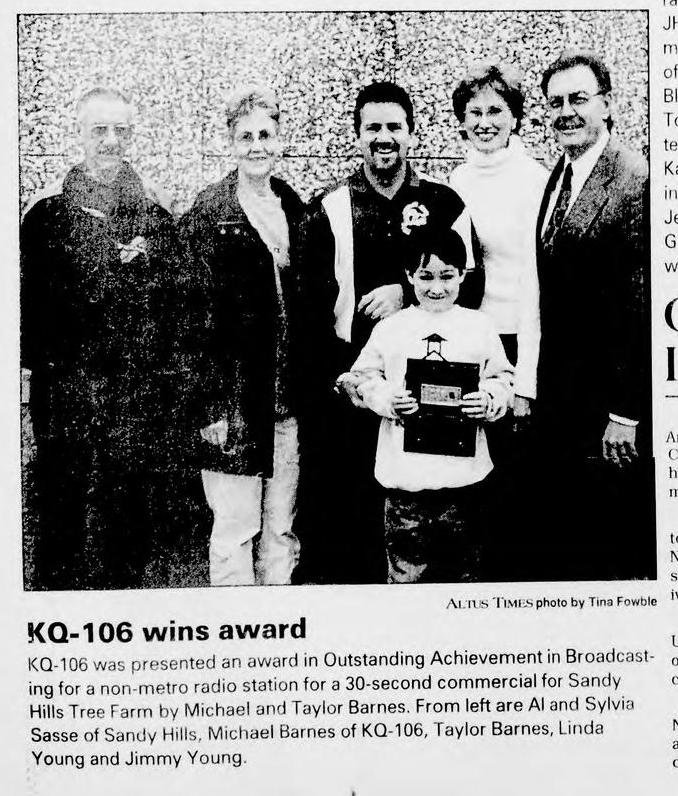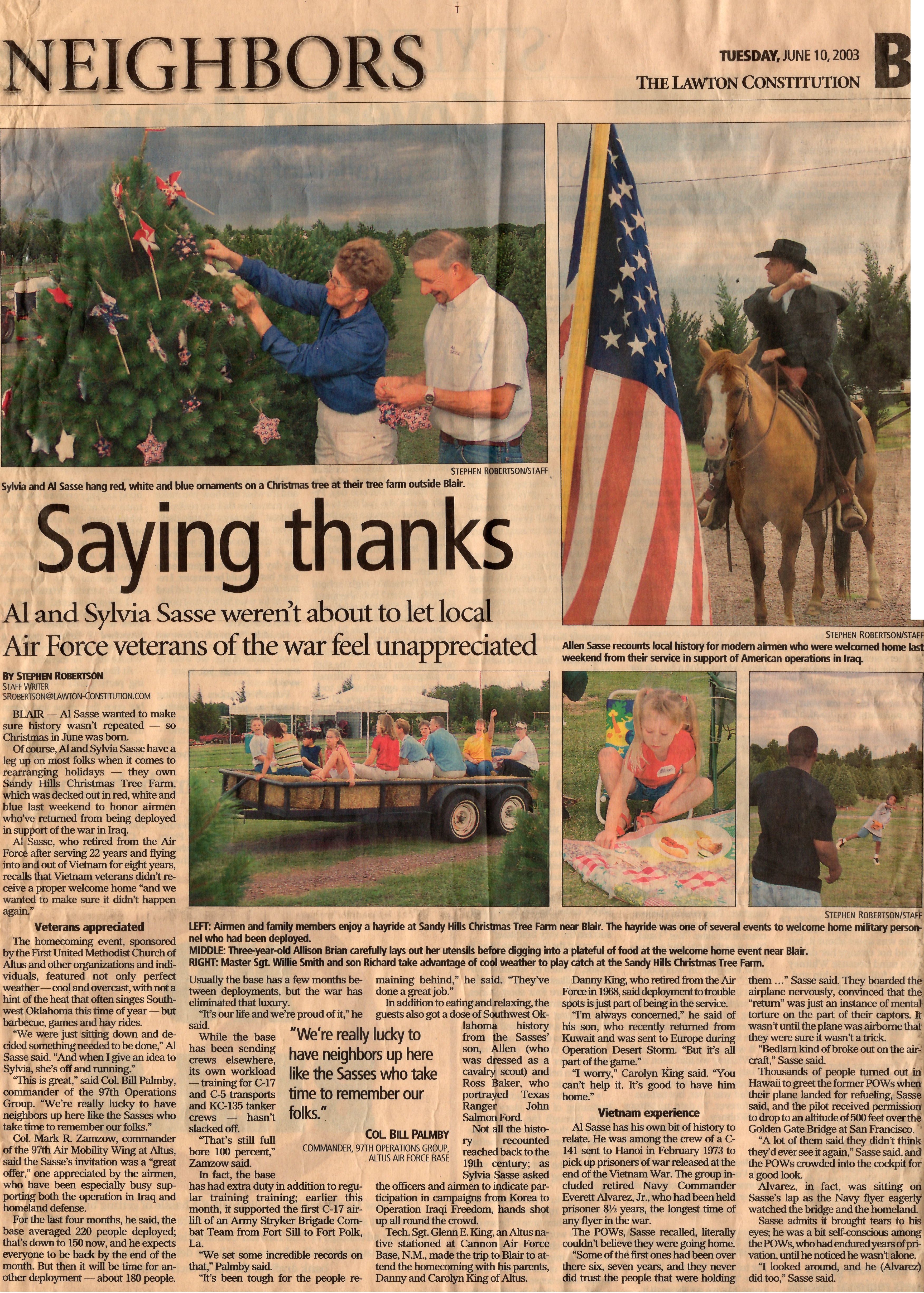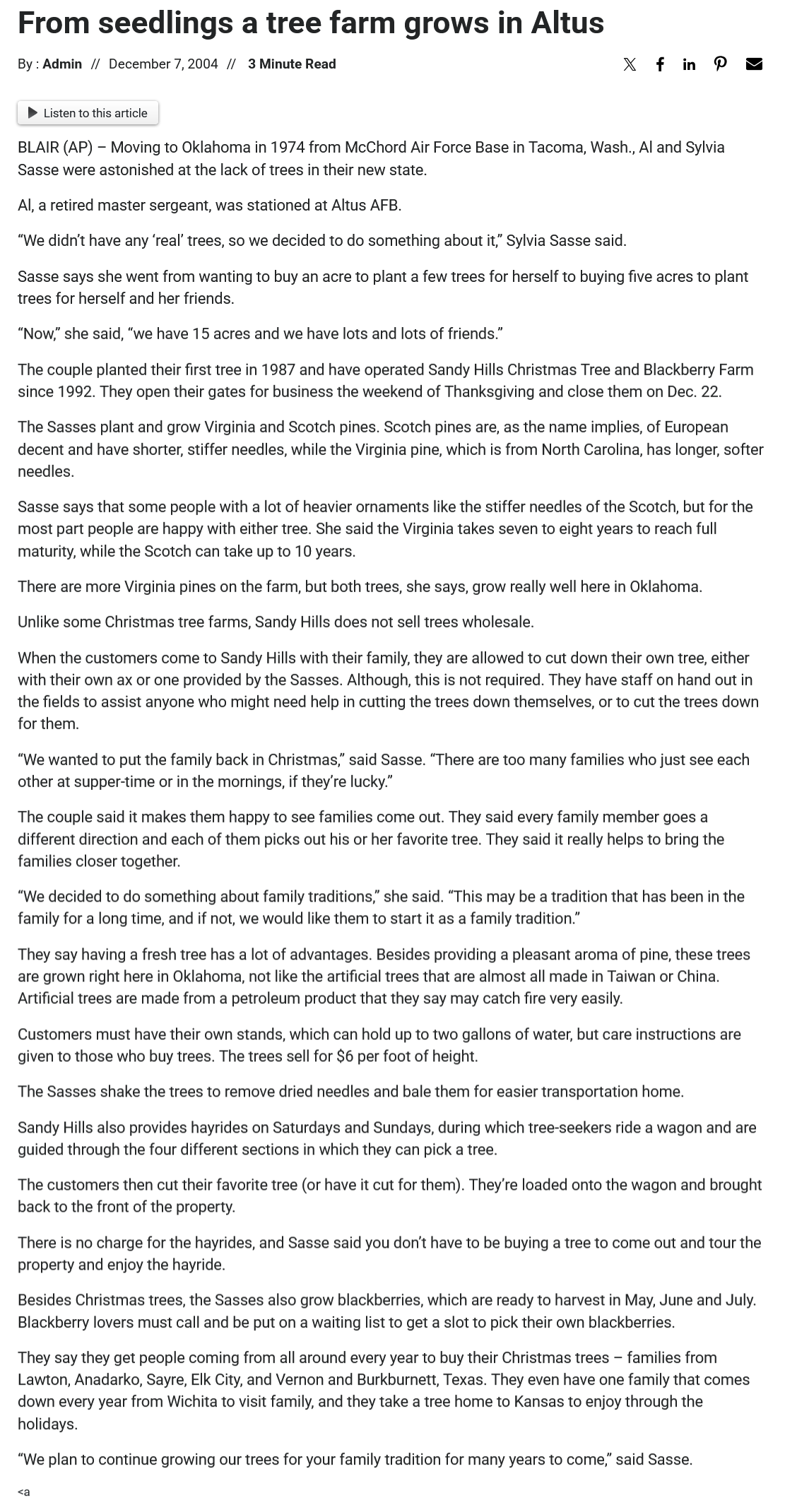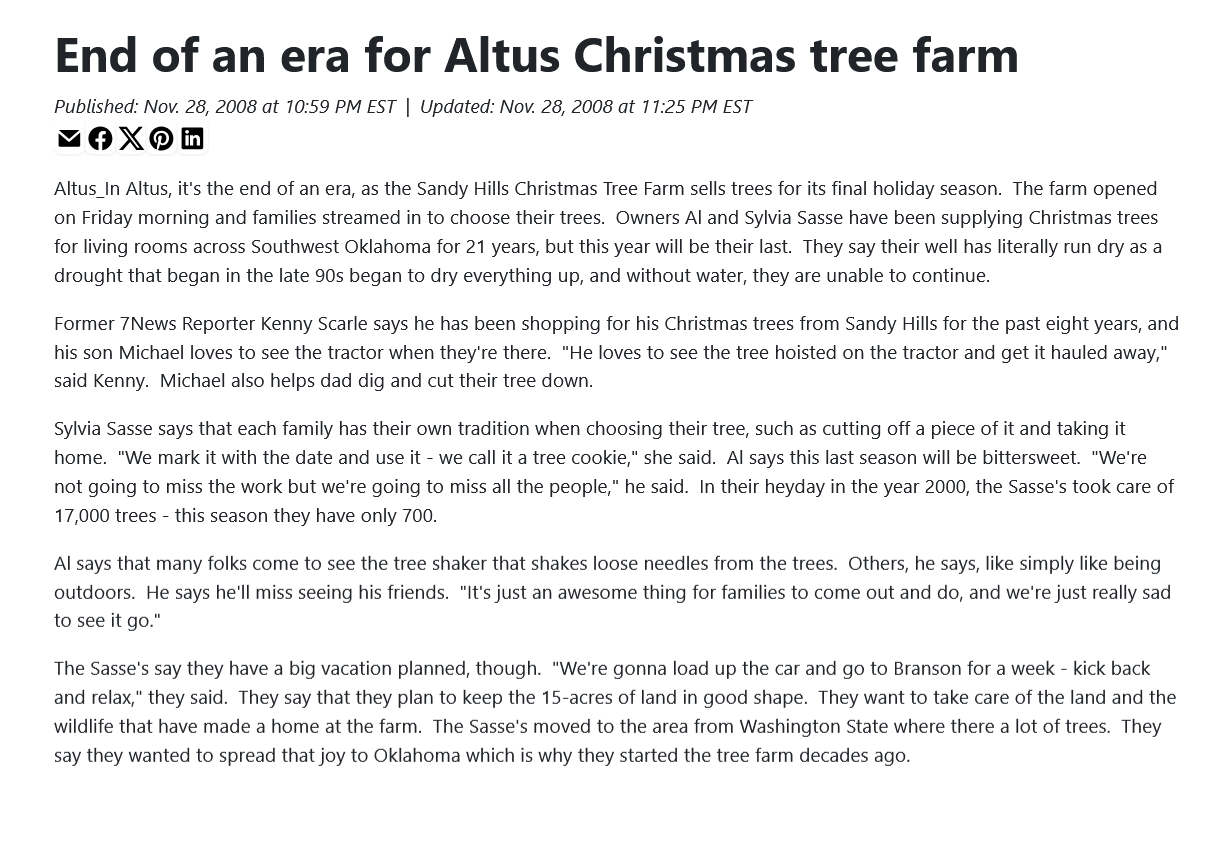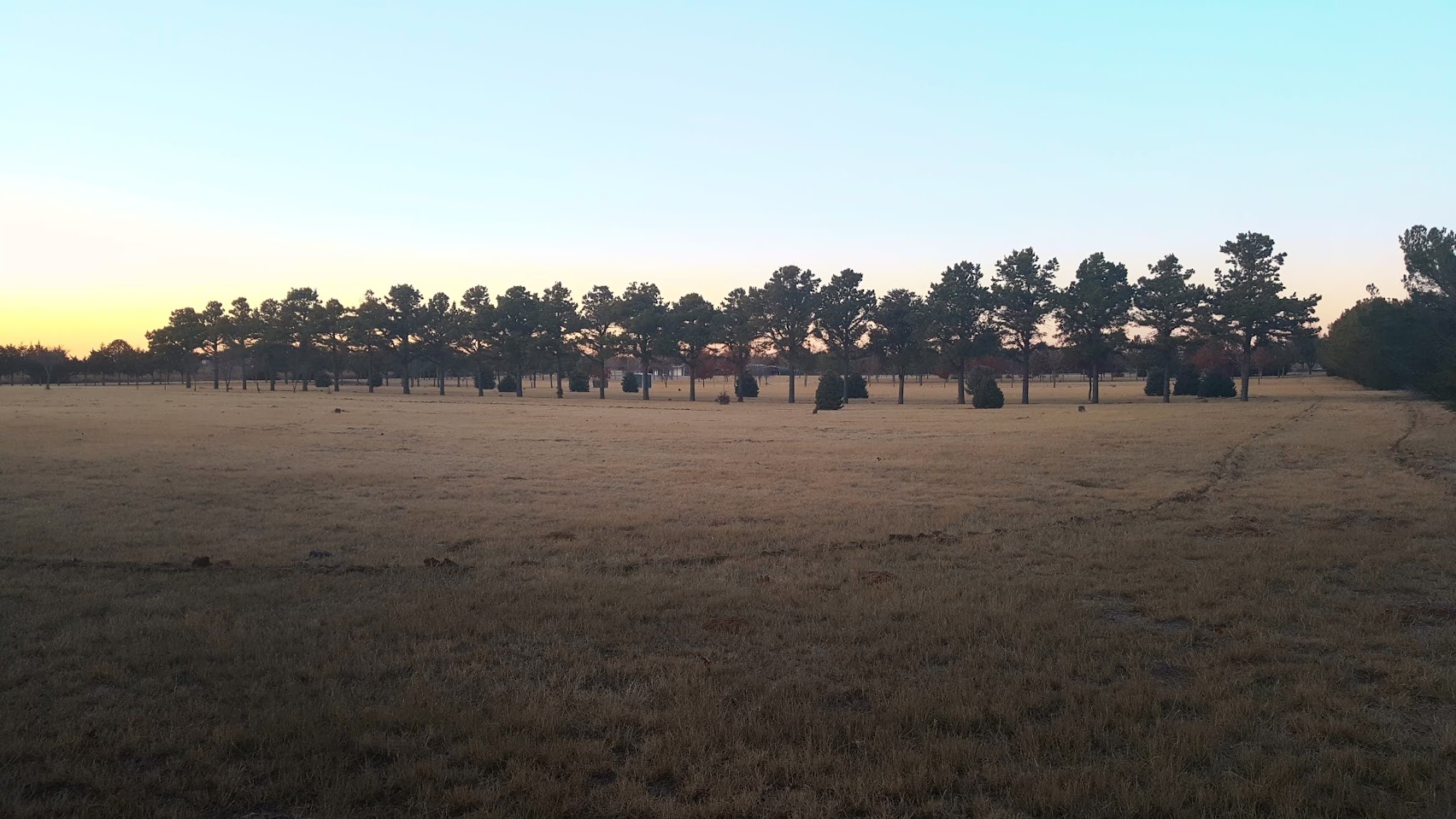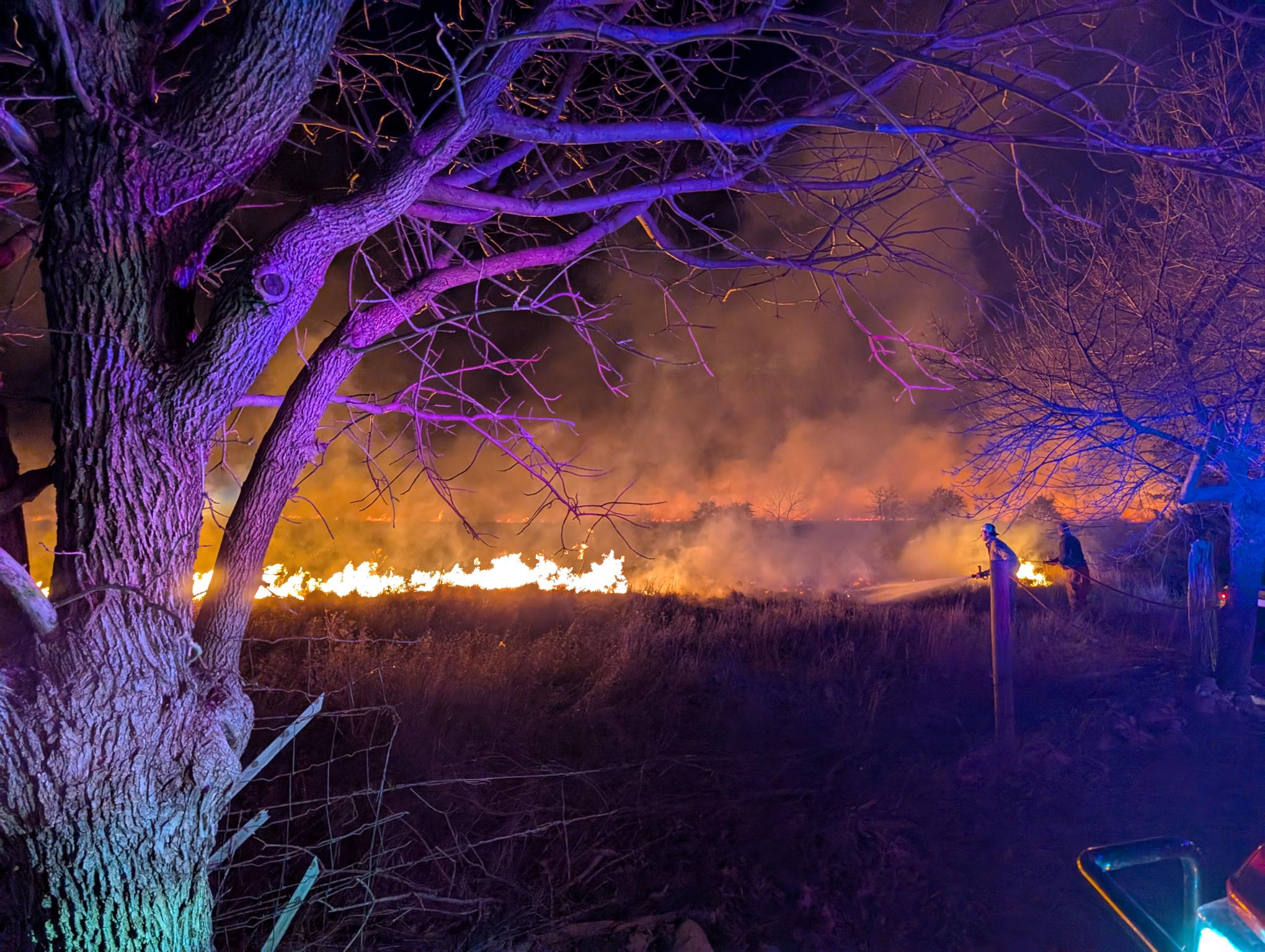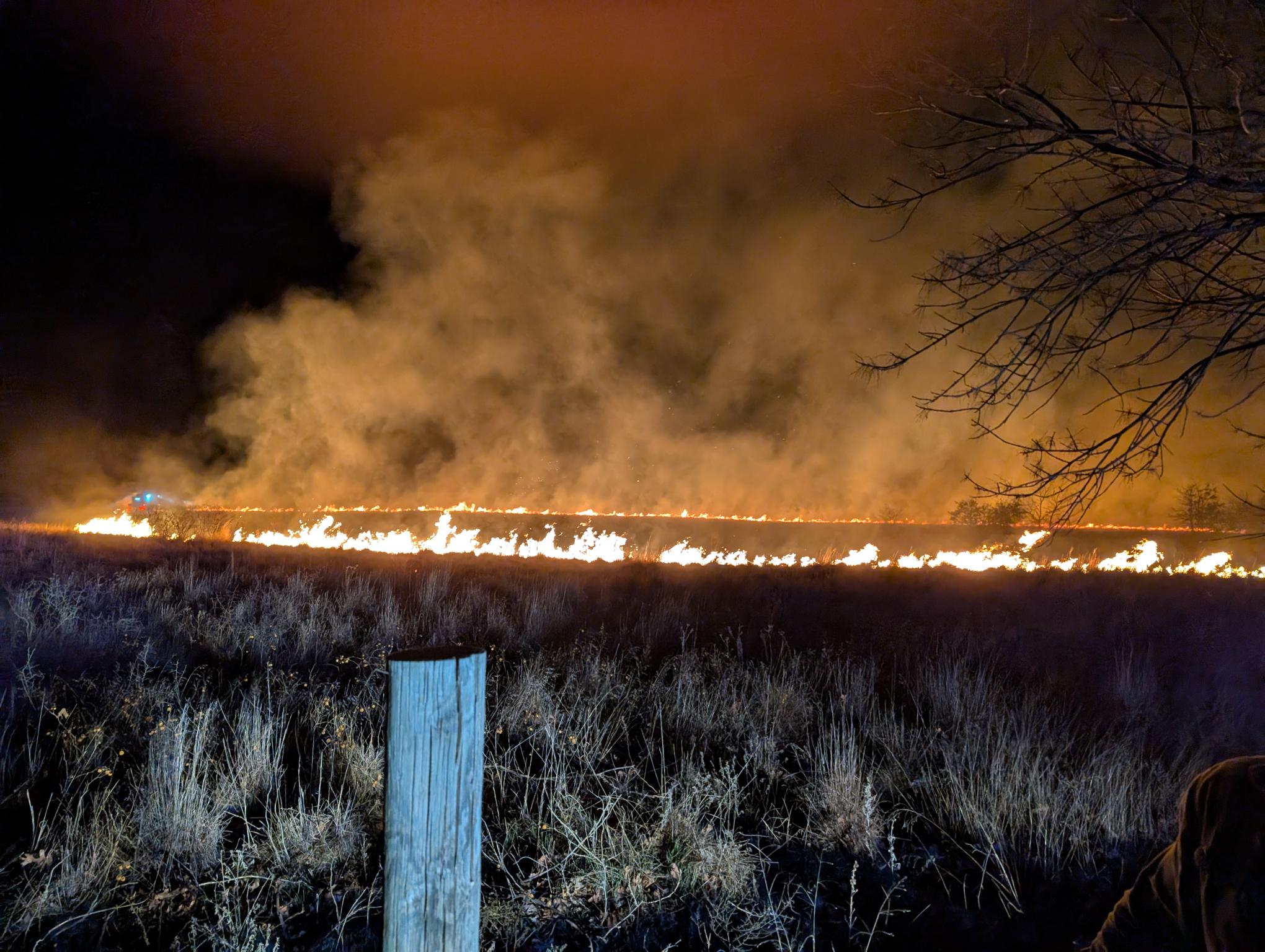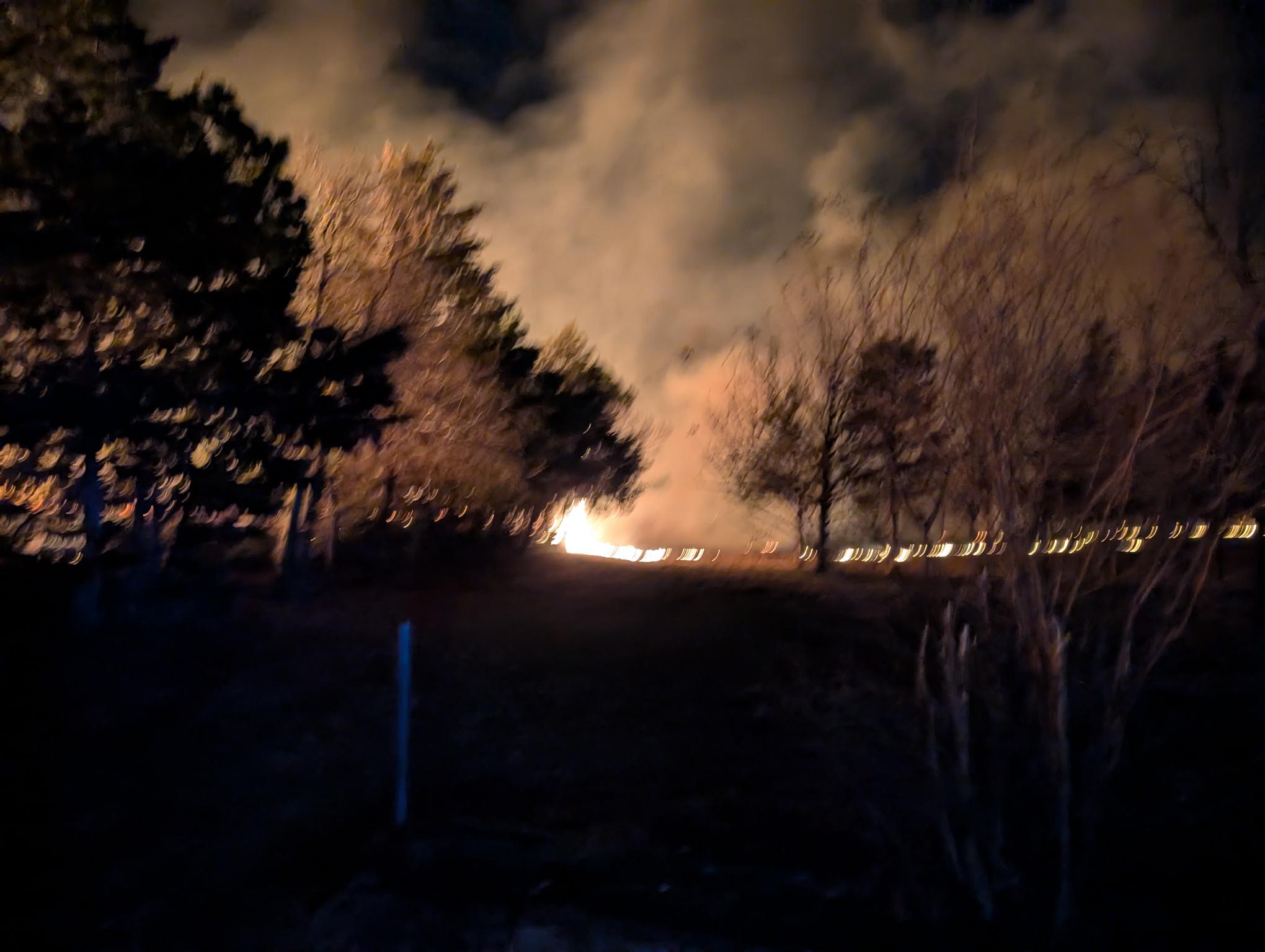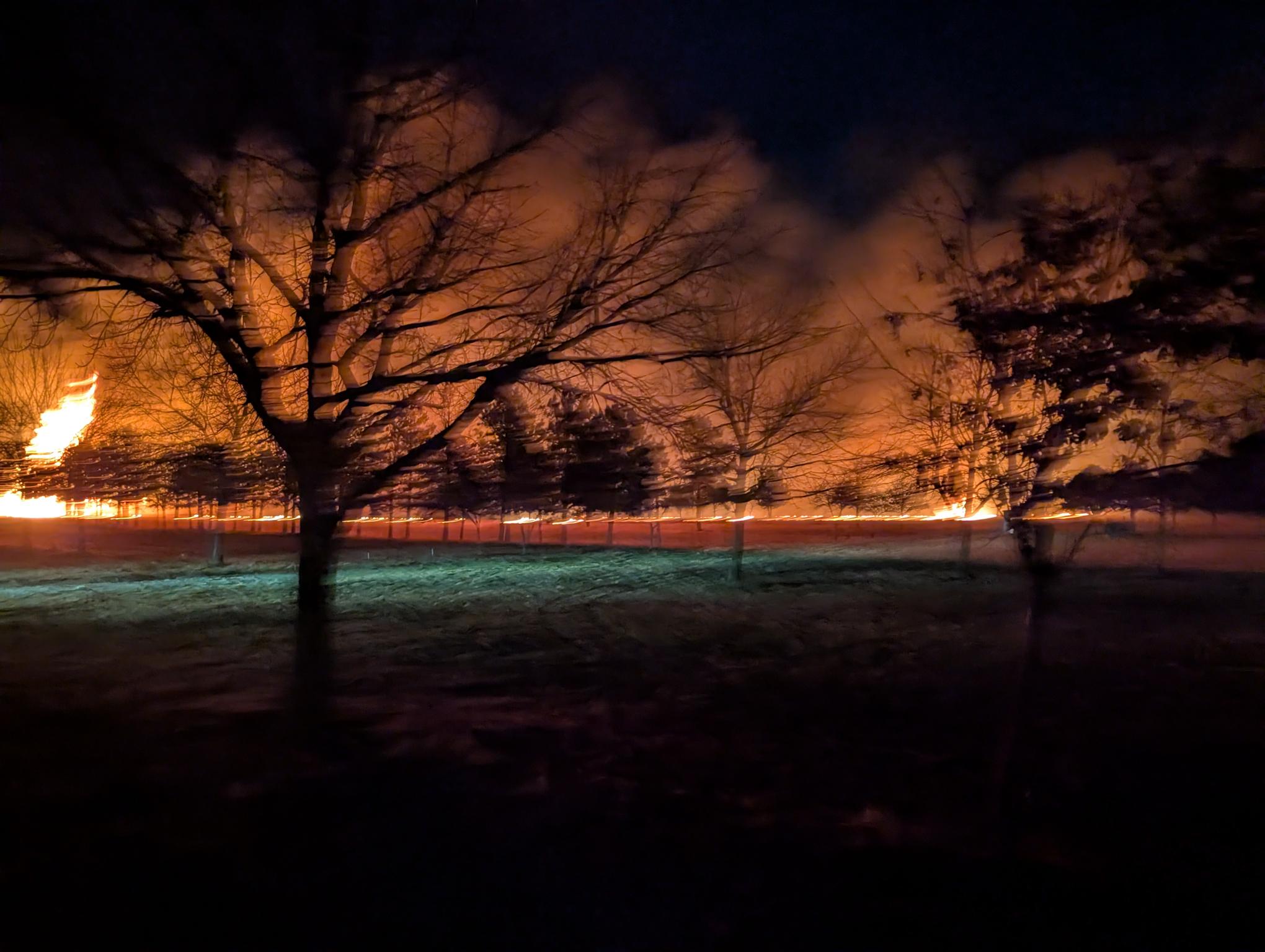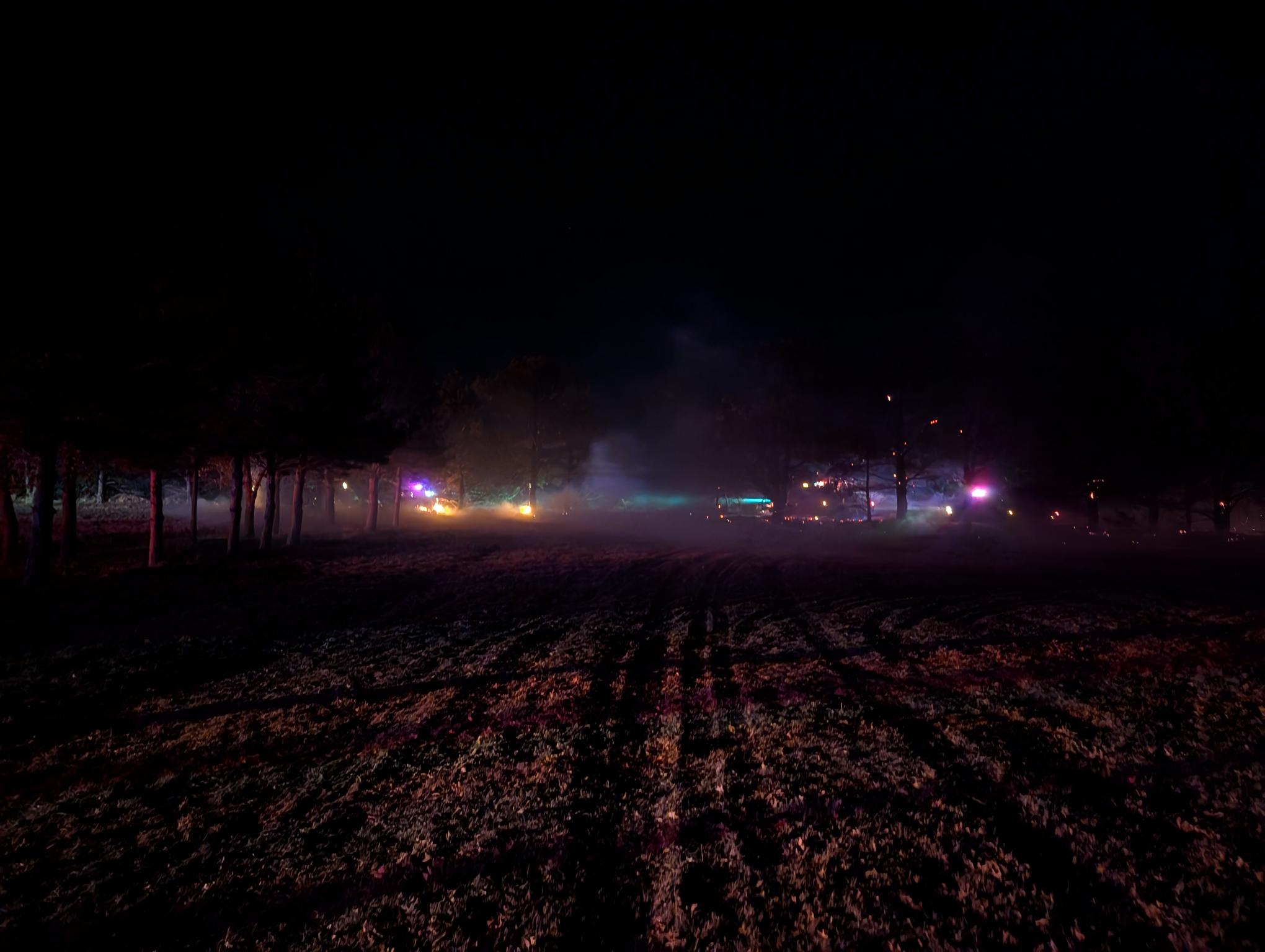❧ Sandy Hills Christmas Tree Farm
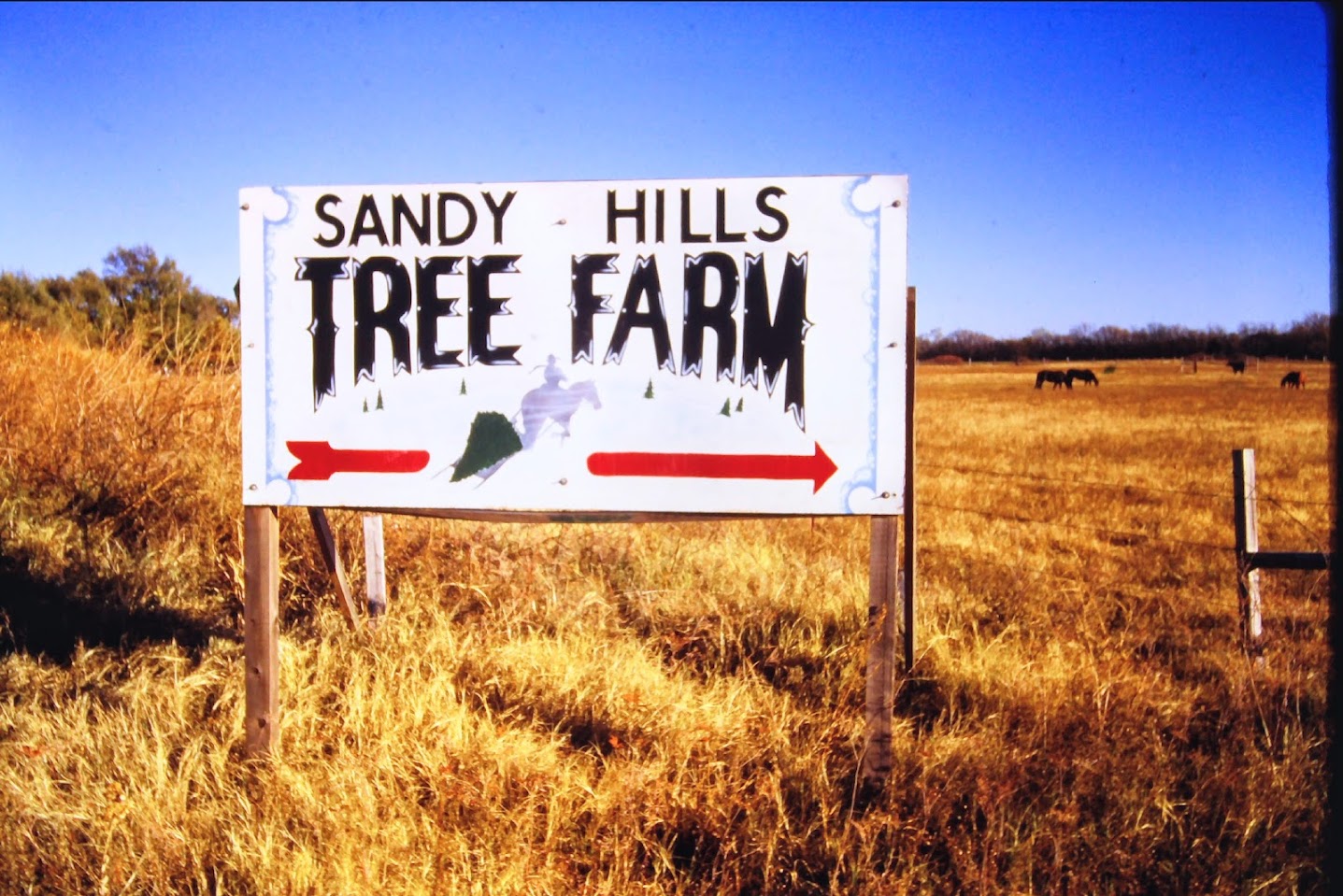
November 1995
Founded by Al and Sylvia Sasse in 1987 after Al's retirement from the Air Force, Sandy Hills Christmas Tree Farm (Sandy Hills for short) was a 15-acre of various conifer trees including scotch, ponderosa and Virginia pines, and fir trees. Sylvia had always wanted to work for the forestry department and had studied tree planting for a year before the operation began. The two planted 500 trees the first year, with more planted each following year to establish a crop rotation, though it would take several years before there was a sellable crop.
Of the initial 500 planted, only 45 survived, and the following years would be full of experimenting with different species and forms of care.
"We did not have irrigation set up. We had to carry the water to them. I don't believe that we watered them well enough." ~Sylvia
In 1988, 700 trees were planted, but only 100 survived - drought-resistant Eldarica desert pines from Afghanistan. However, while these survived the hot, dry summer, they were were not cold resistant. Through perseverance, the annual loss rate was reduced to as low as 2 percent and around 800 and 1,000 trees would be planted each year in late February, while the trees are dormant. The Belgian scotch pine seems to have taken to the climate best. By 2005, 17,000 trees have been grown and harvested.
It wasn't until 1992 that the farm opened to the public.
"I put out a handmade sign on the highway (U.S. 283) and two weeks later put out a sign saying we had sold out." ~Sylvia, on the first year
Every year on Black Friday, the tree farm would open to the public, 9 a.m. to 5 p.m. Monday through Saturday and 1 p.m. to 5 p.m. on Sunday. Customers could look about the available trees (sections marked in tape) with a measuring pipe (provided) could place a "SOLD" tag on their tree of choice, cut down their own tree (saw provided) or have one cut for them (via family members and friends helping out!); a shovel for people who want a live tree (not recommended for indoors more than seven days). For all, a shaker to remove any dead needles and netting for easier hauling home. It sold out for its first two open years, 1992 and 1993.
"The people that have come out with their kids to choose a tree this way, really get the true feeling of Christmas because the joy of watching children pick out their tree is really thrilling." ~Al
Lucky customers might find a bird nest in their tree when they get home, as all the bird nests were left in the trees:
"...so people can find them; they say if you find a Christmas tree with a bird nest in it, it brings good luck throughout the year." ~Al
Christmas services also included orders for wreaths, centerpieces and candy canes at $15 each or swags at $6 each - garnished with pine cones, bows and other decorations (all handmade by Sylvia) and tractor hay rides (courtesy of Al). Later on, the farm would add a blackberry and pumpkin patch around 2003.
The farm also allowed school group outings for lessons on local ecology and the ins-and-outs of tree farm operation.
Farmwork includes walking the grounds daily, making sure the irrigation lines are unclogged and working to keep the trees watered (Each tree needs five gallons of water a week). The trees were trimmed and shapped three times a year by hand and the trees are sprayed seasonally with pesticides.
"I haven't had a coffee break since I retired." ~Al
"...[You] better not mind sleeping with Ben Gay and Arther Itis!" ~Sylvia
Despite the hard work, both Al and Sylvia were happy to have the farm, as they have seen many other retirees end up sitting at home and then suffering health problems.
"I can't stop. I need to do this. I'd be worse off if not for the farm" ~Al
Drought became an increasingly bigger issue, however, making it harder to keep up with the trees' needs. Hotter summers and colder winters resulted in water wells drying up; by 2005, the water wells had dropped by 48 inches since 1997. By 2005, the number of sale-ready trees dropped from 700 to 500. The blackberry and pumpkin patches were also scaled back as a result, before being phased out entirely by 2007.
The worsening drought and health problems, combined with the strict workload of maintaining the farm, led to it's permanent closure after the 2008 Christmas season, though family members and friends still came by in the following years to clean off the remaining Christmas tree crop.
On March 7, 2025, a fire started on neighboring land to the east (potentially due to "the shooting at [a] target without a proper backstop," per one report), which quickly crossed into the farm, burning some trees and part of the fence line, with no building damage.
